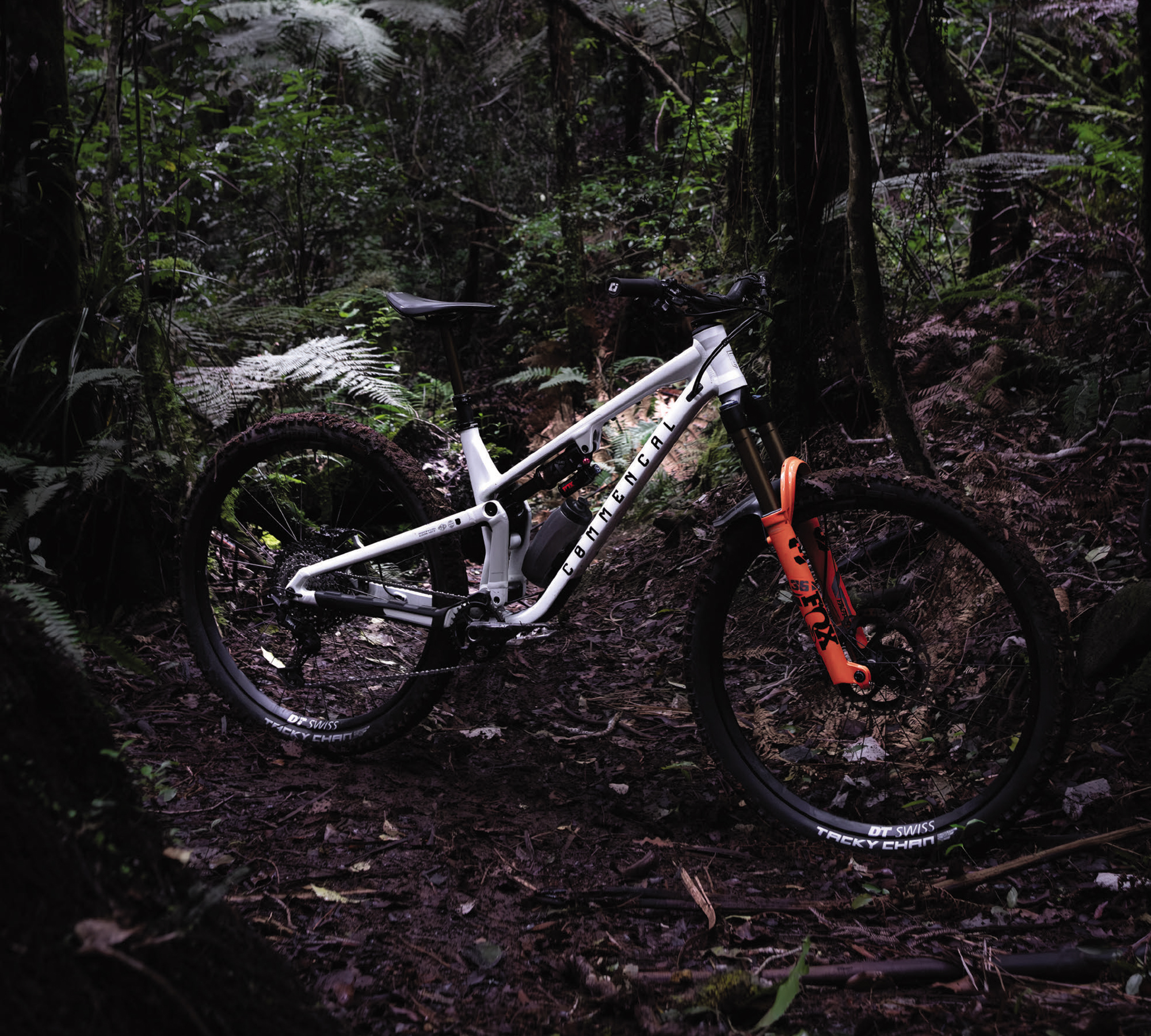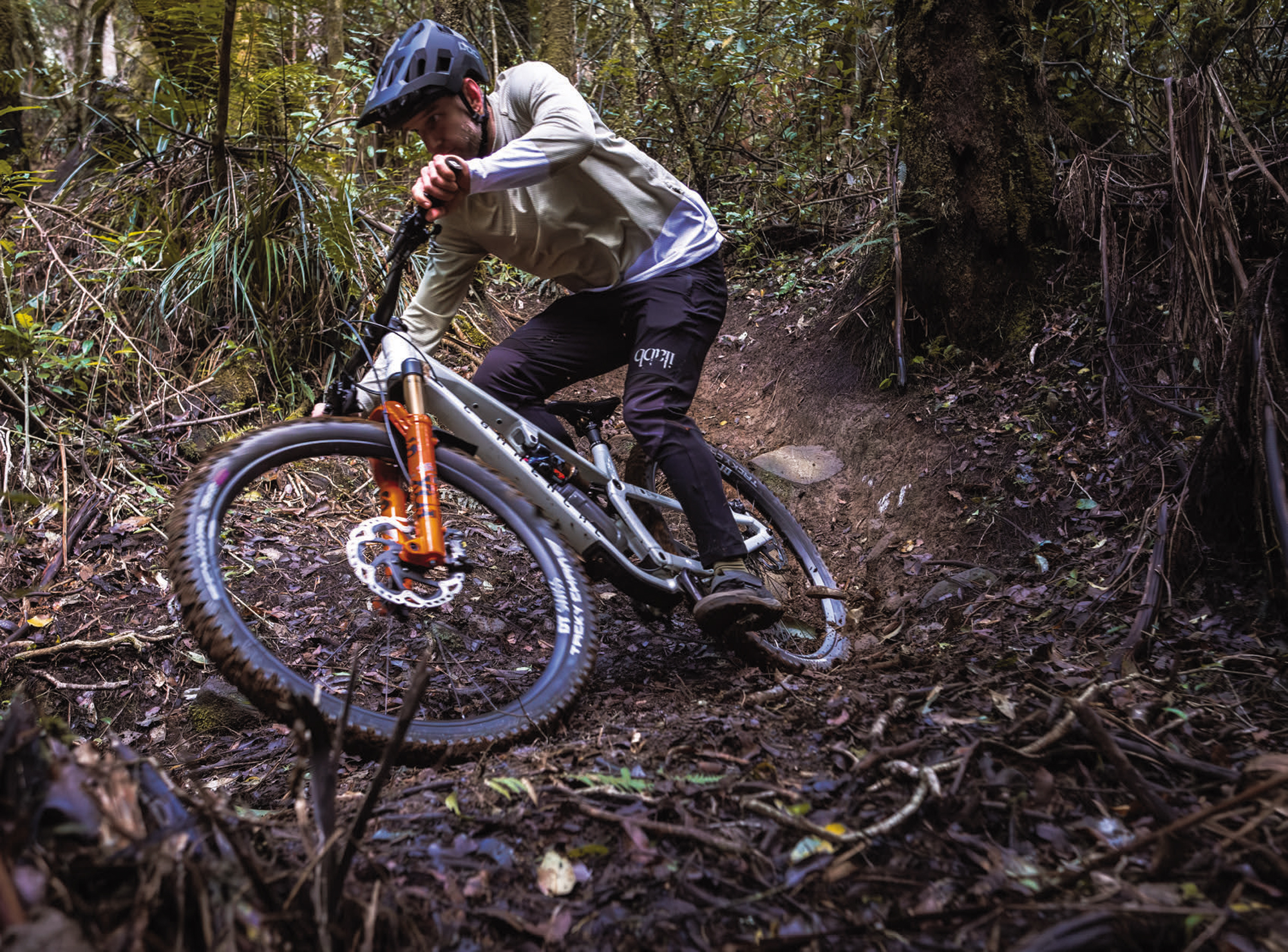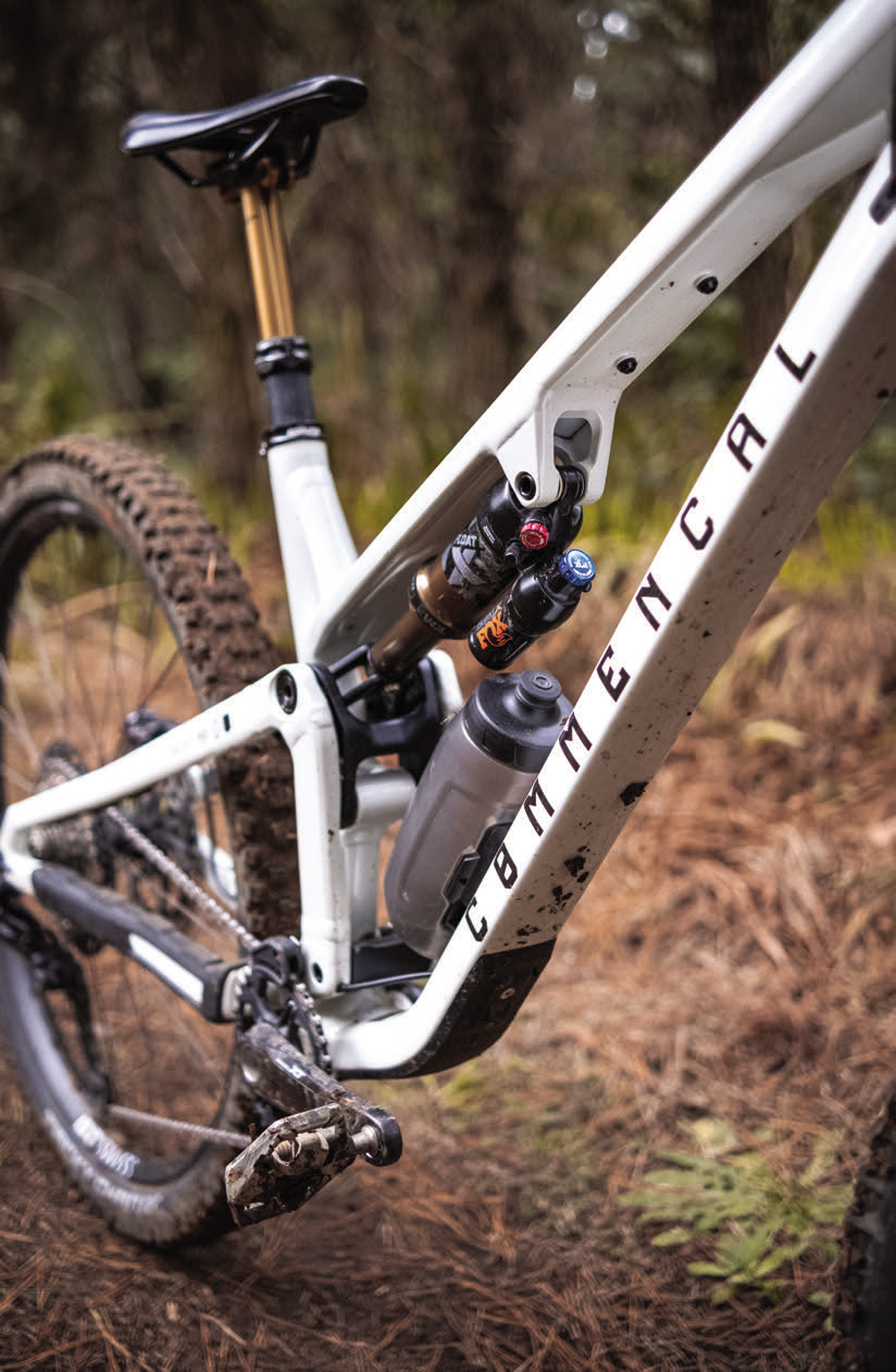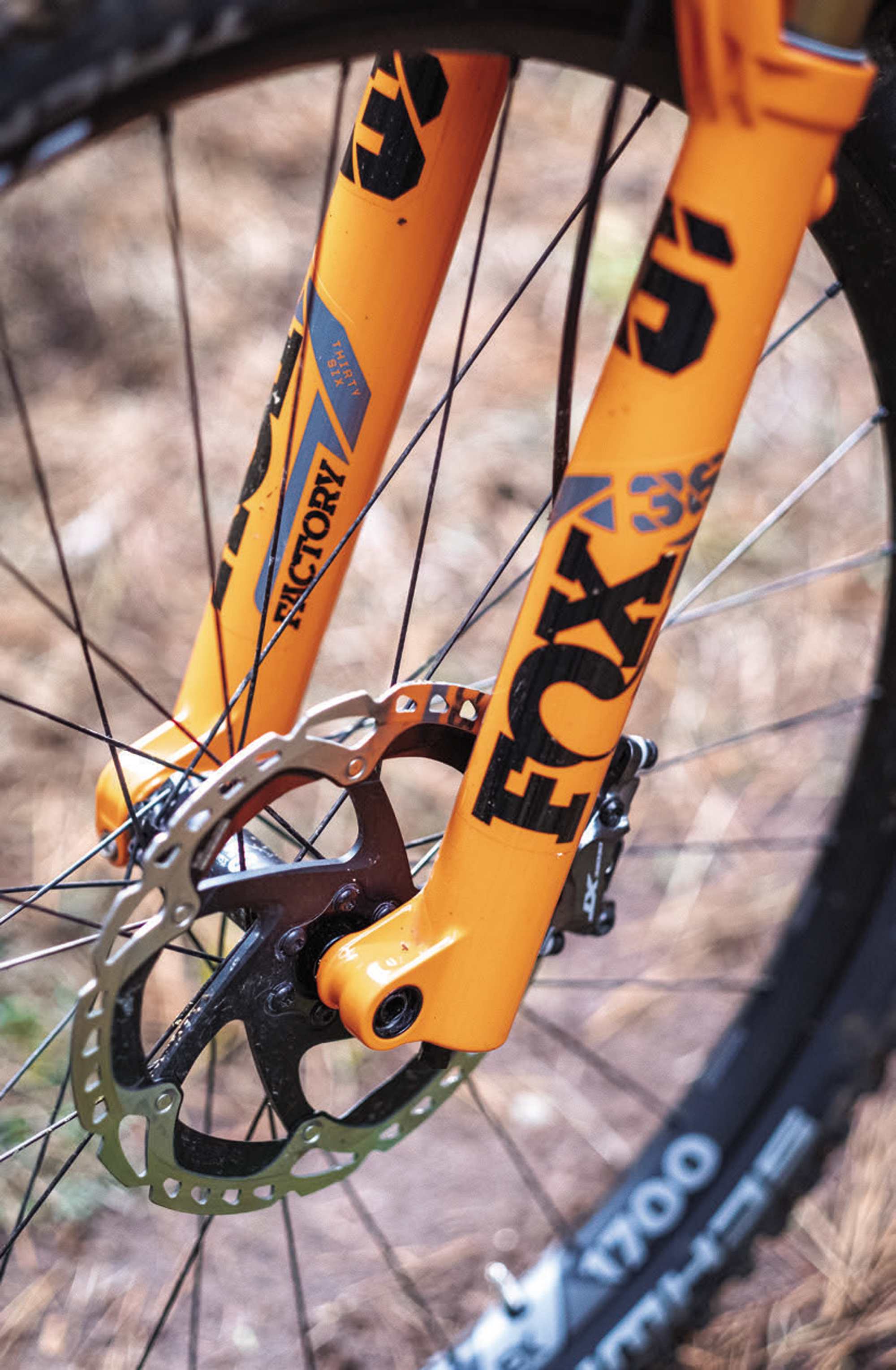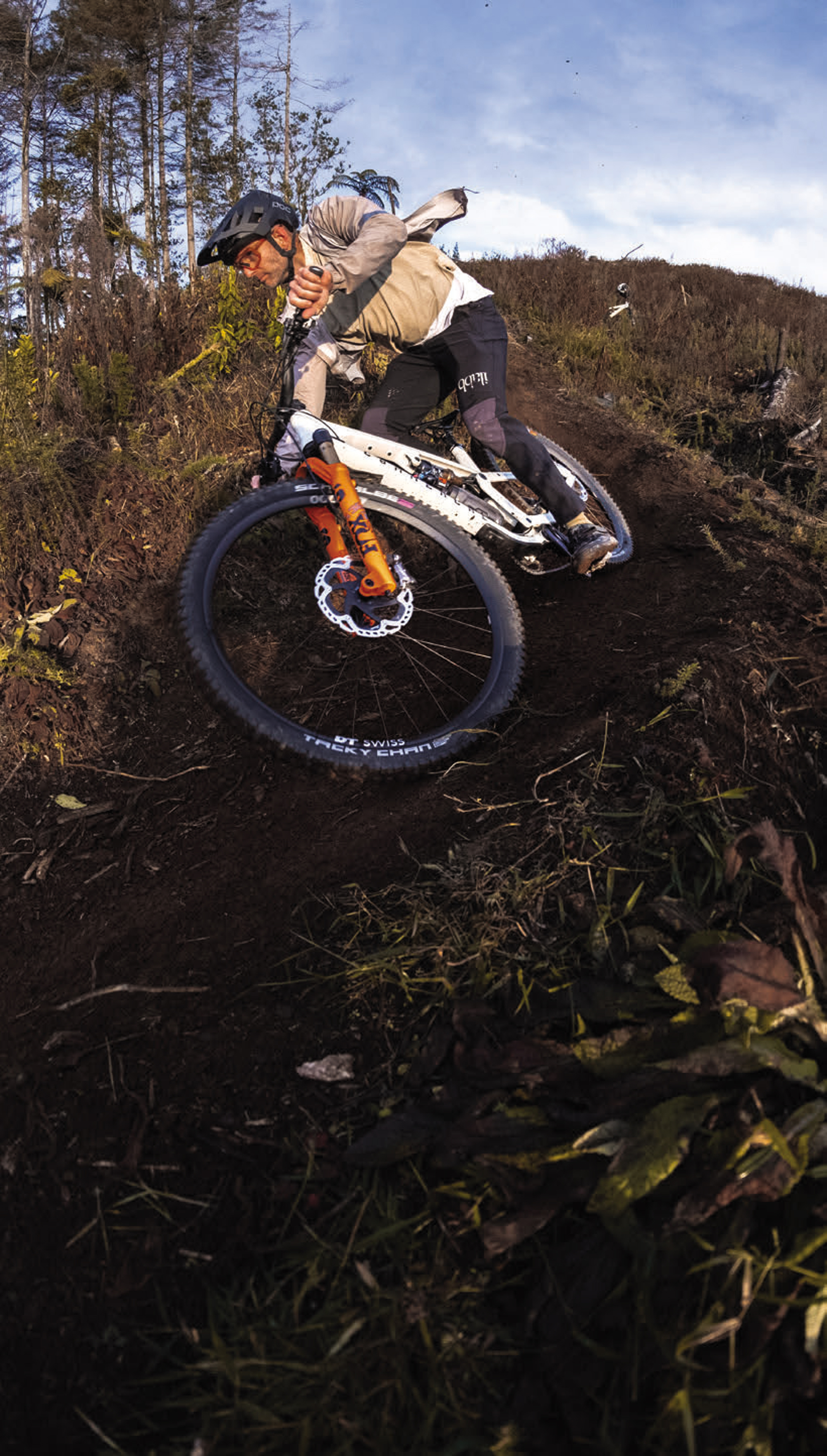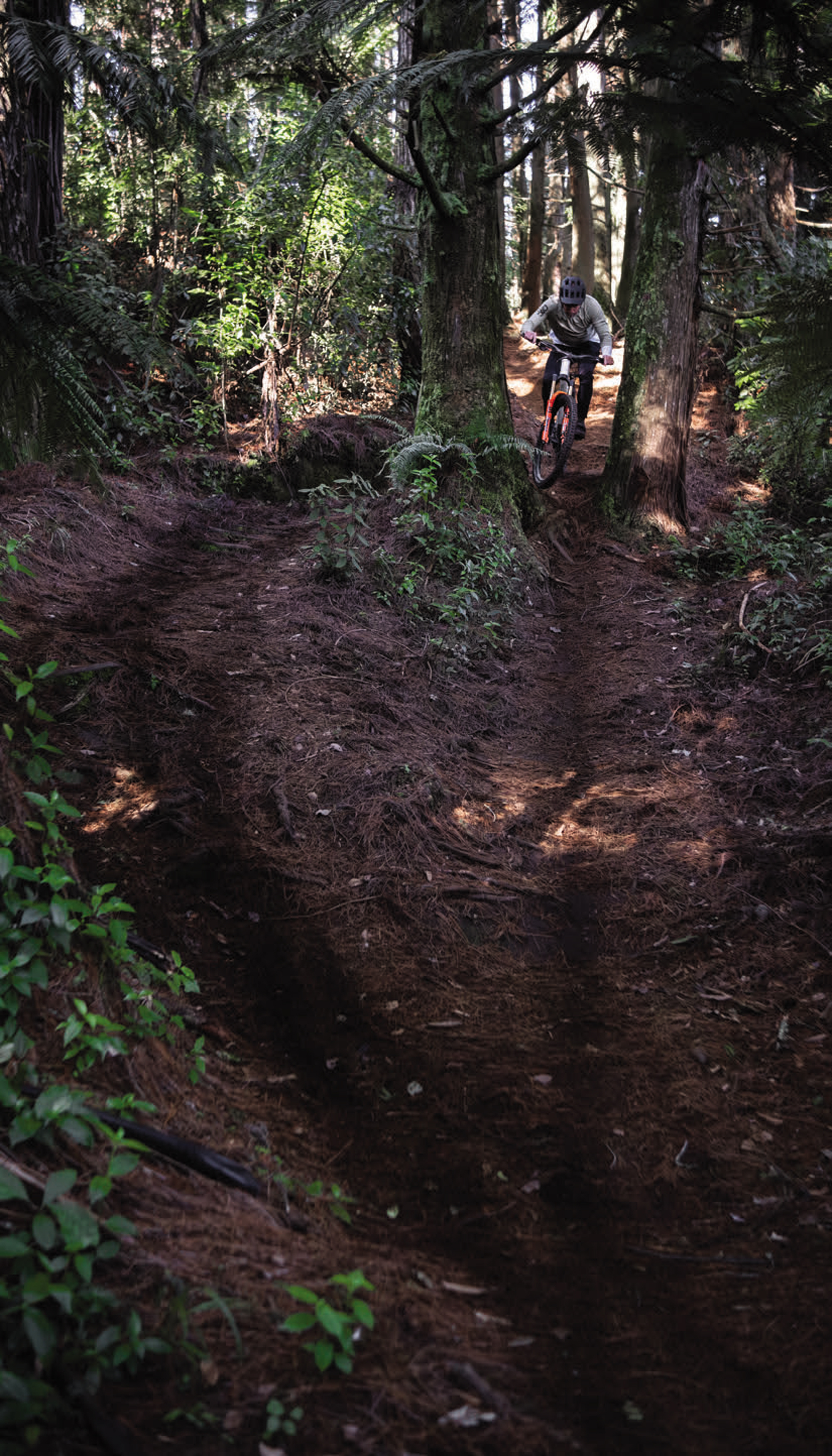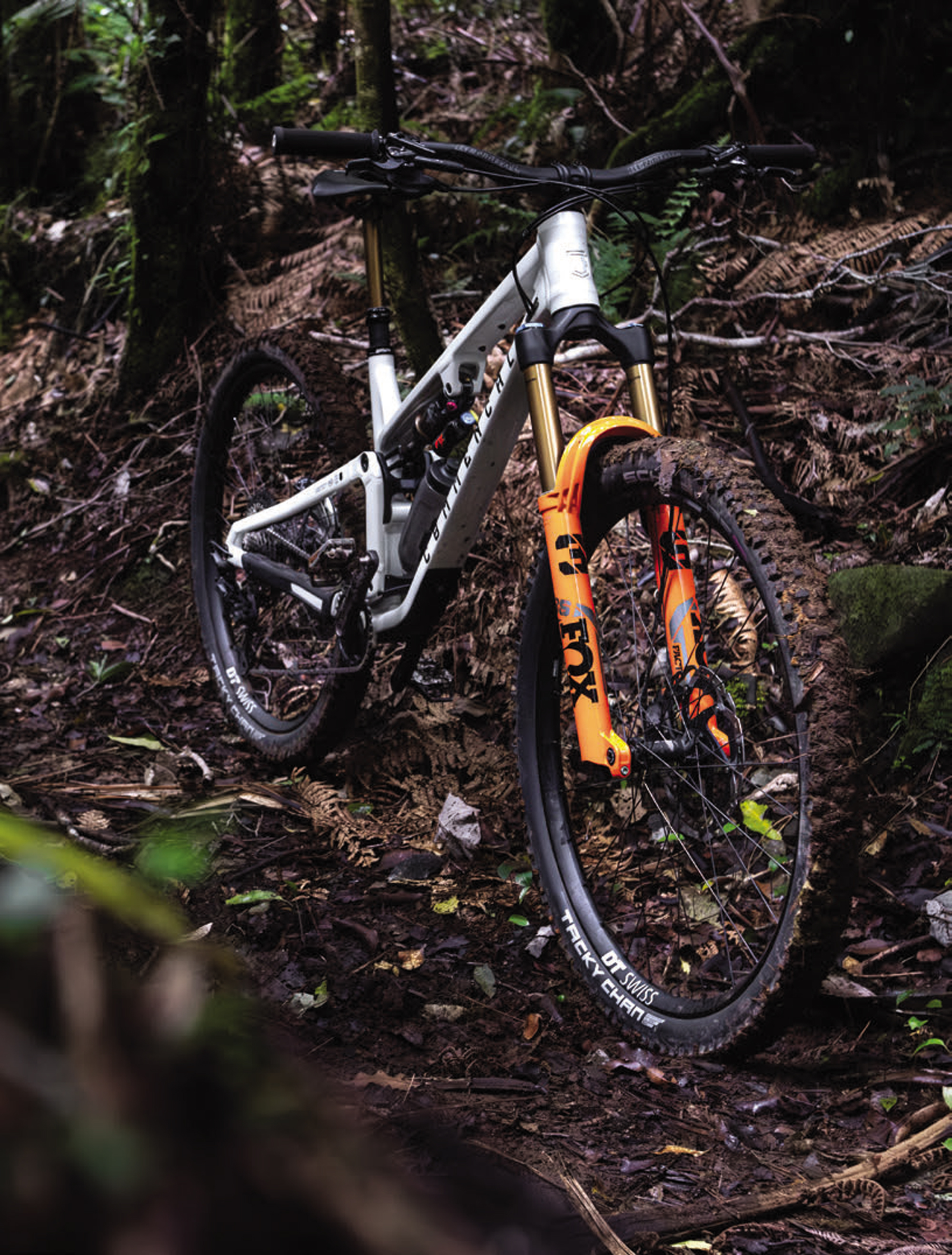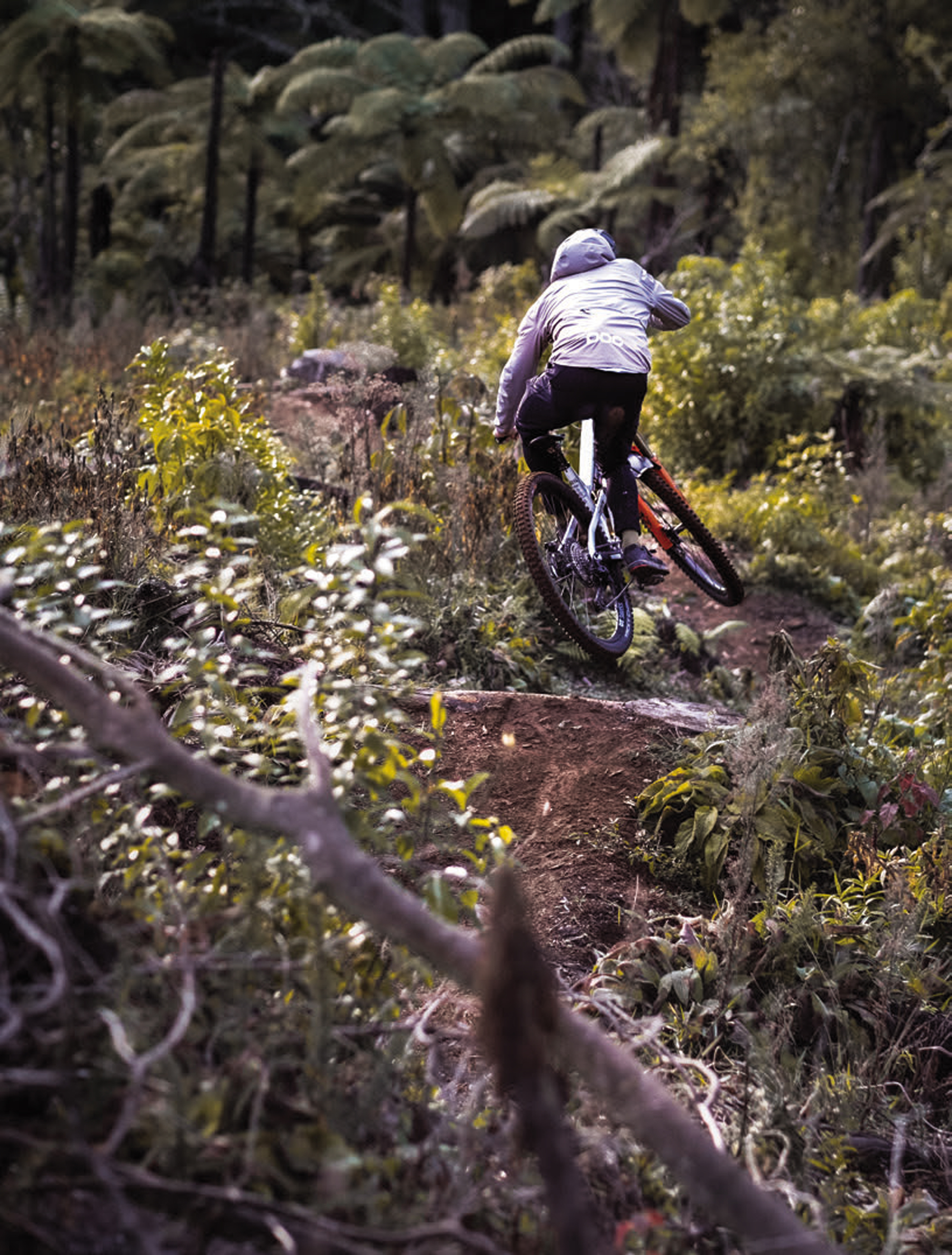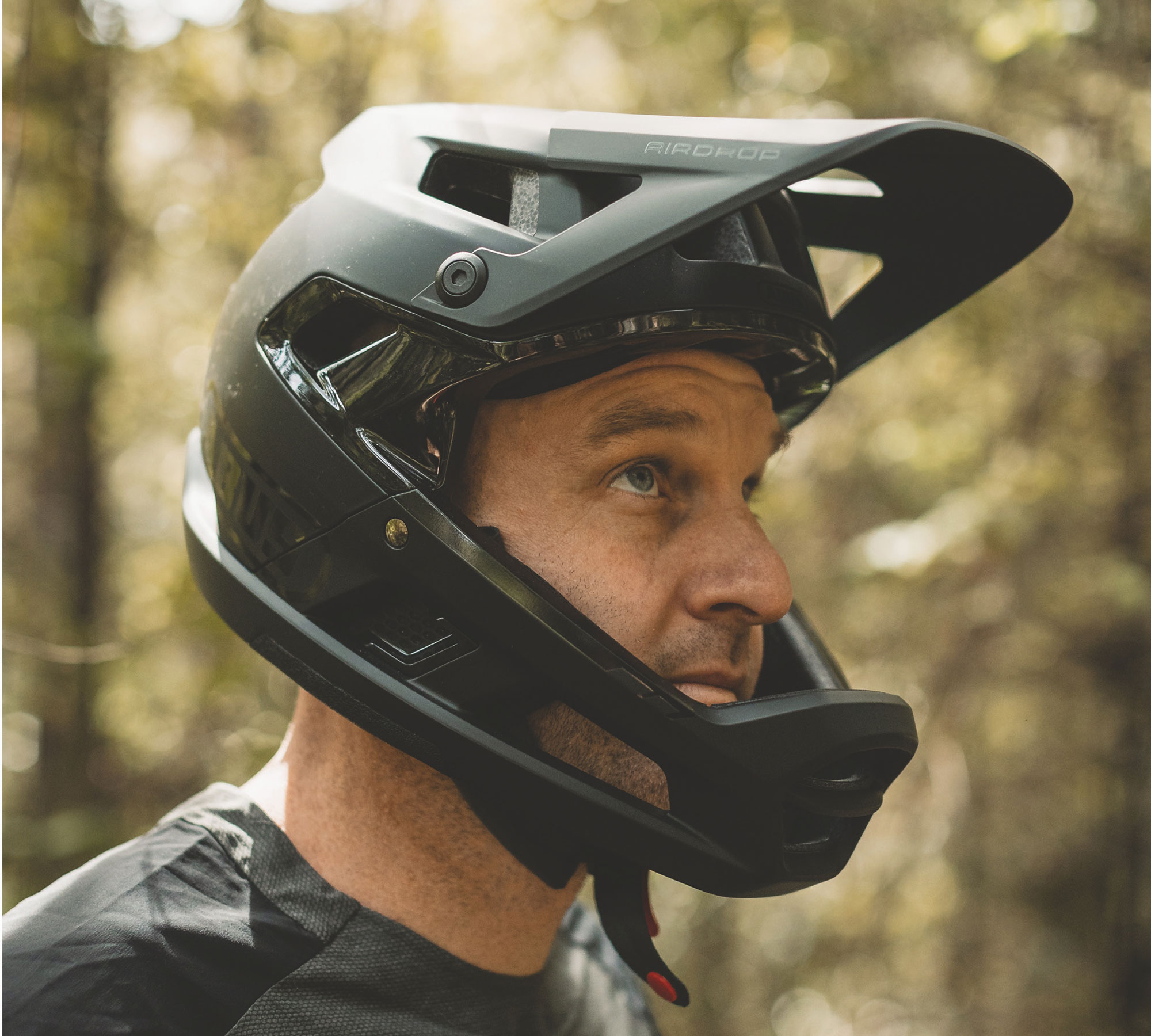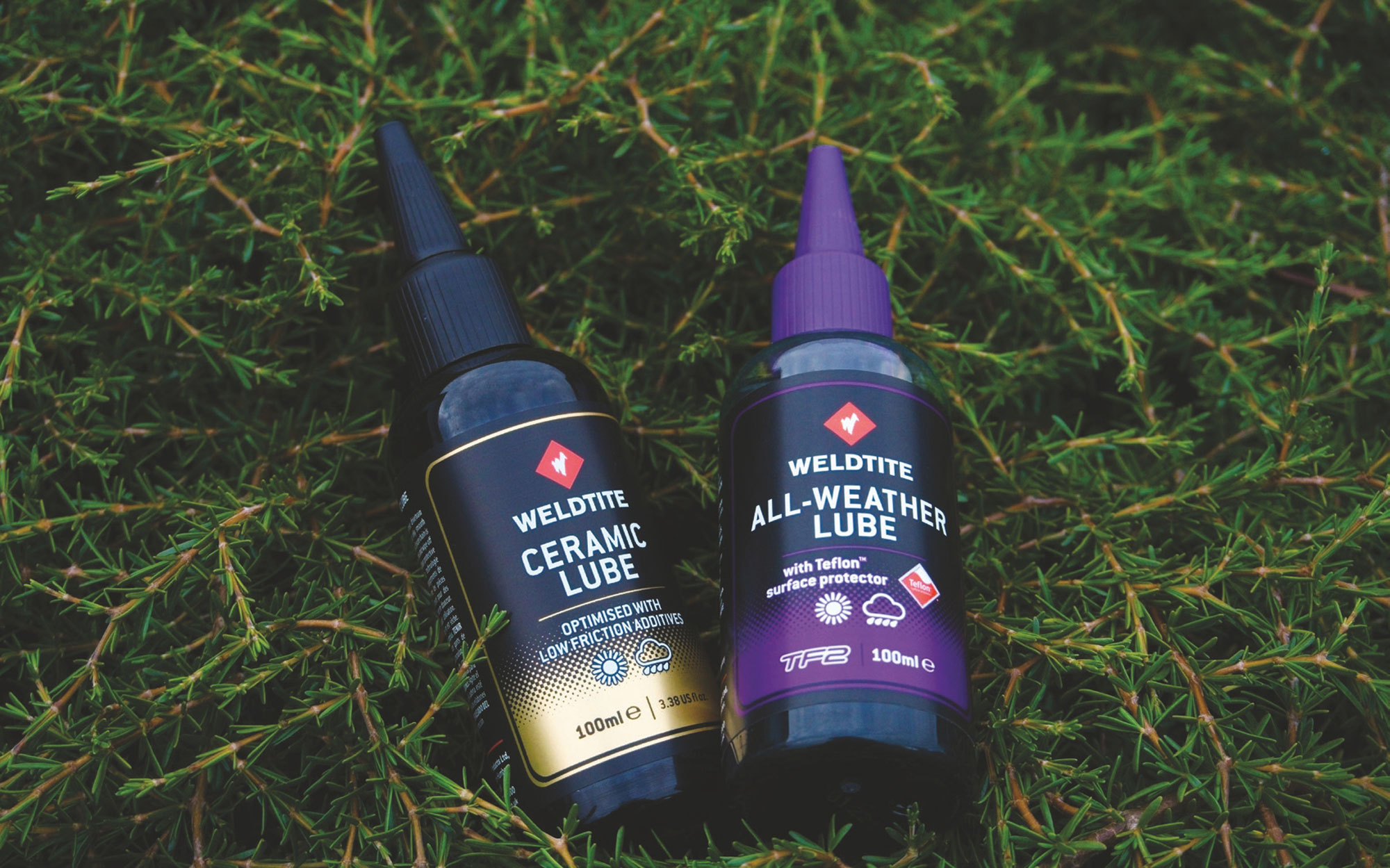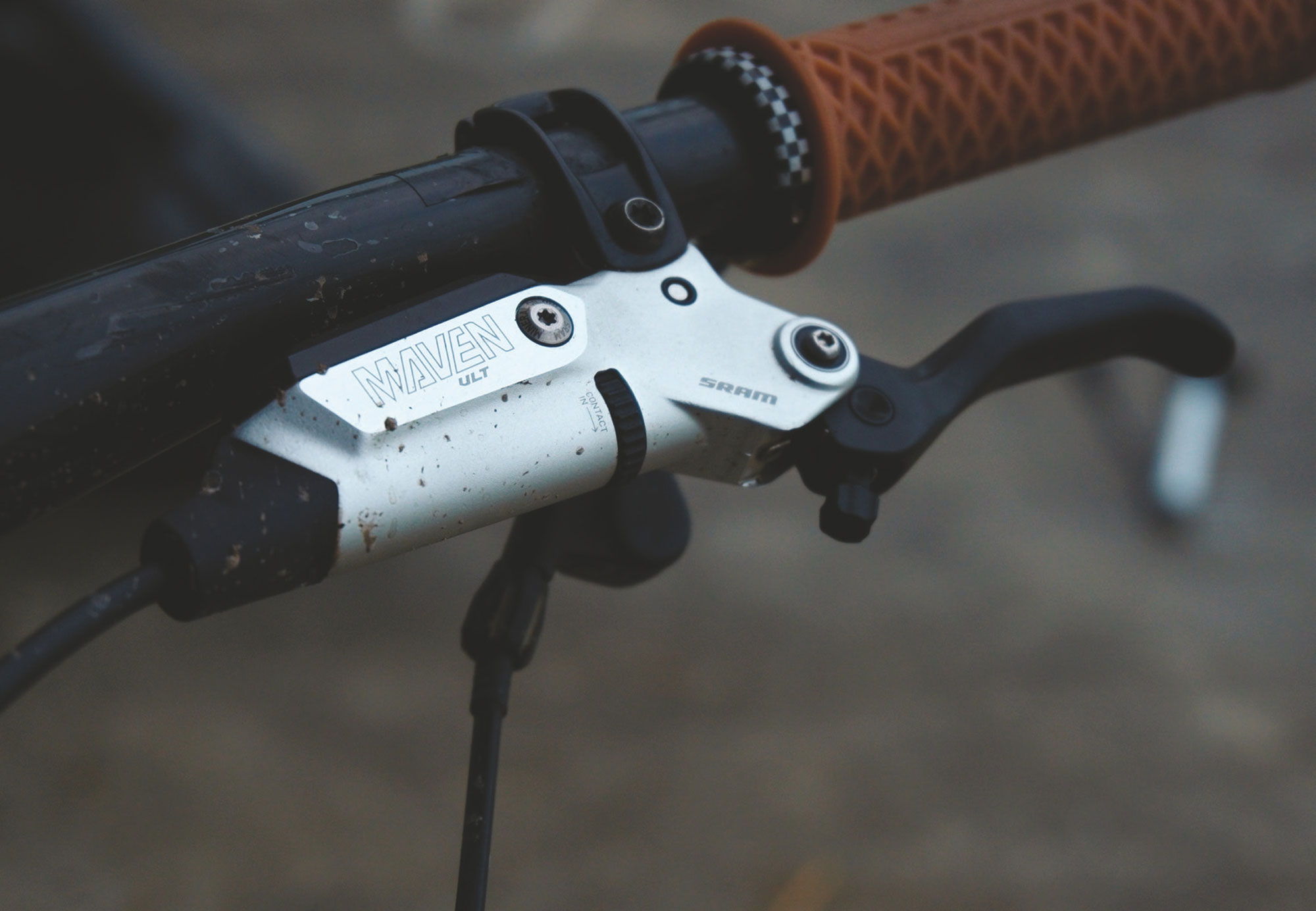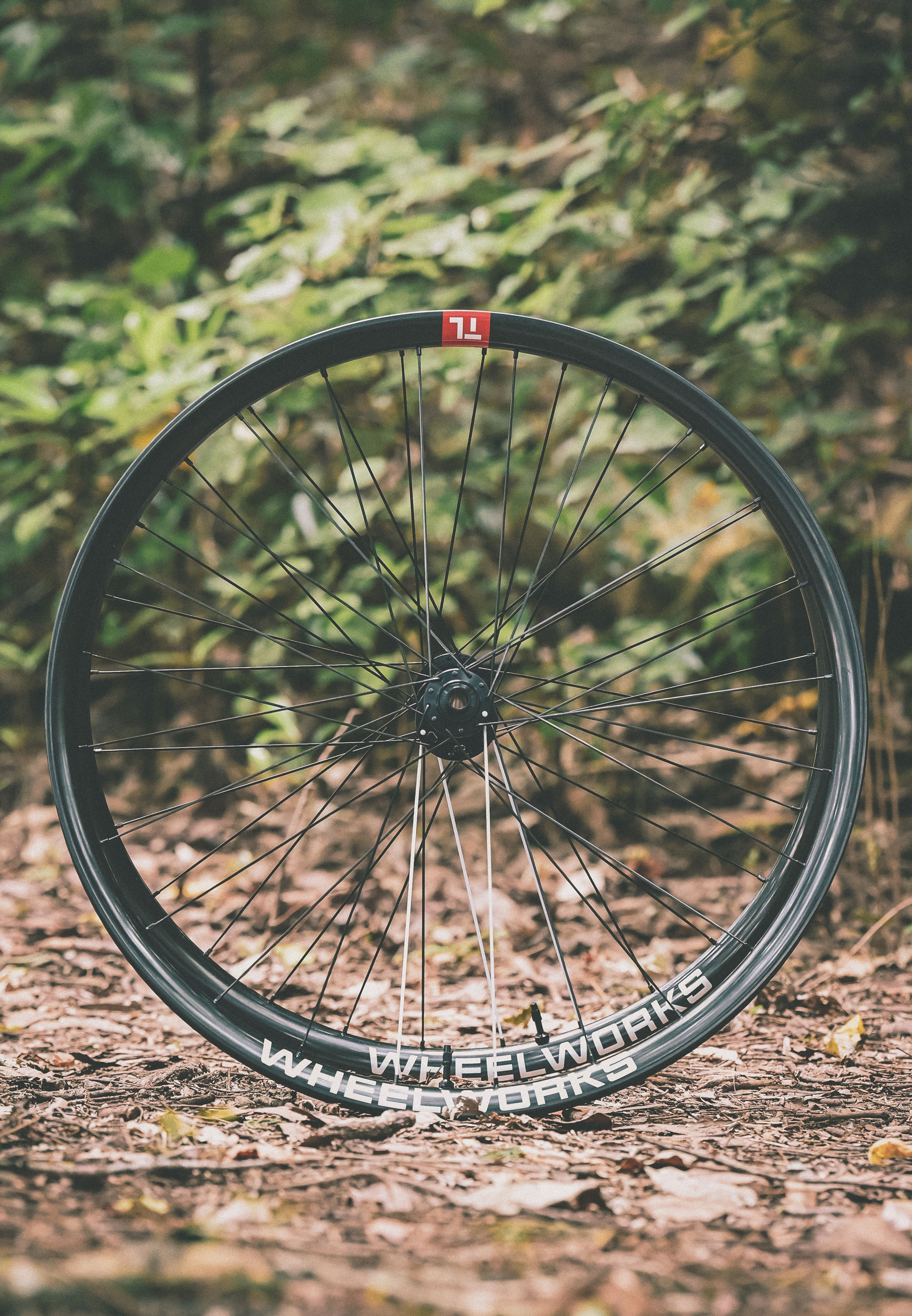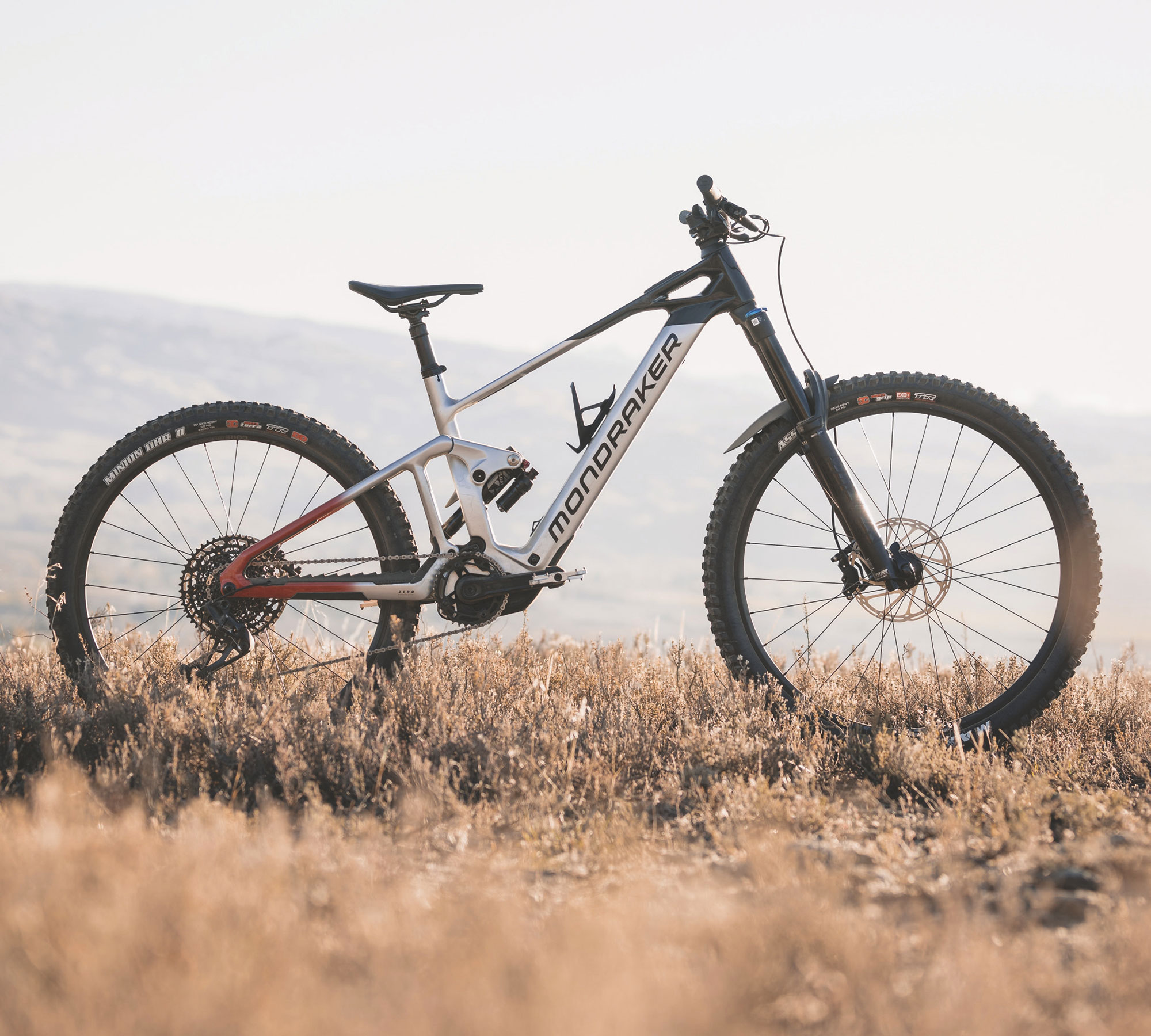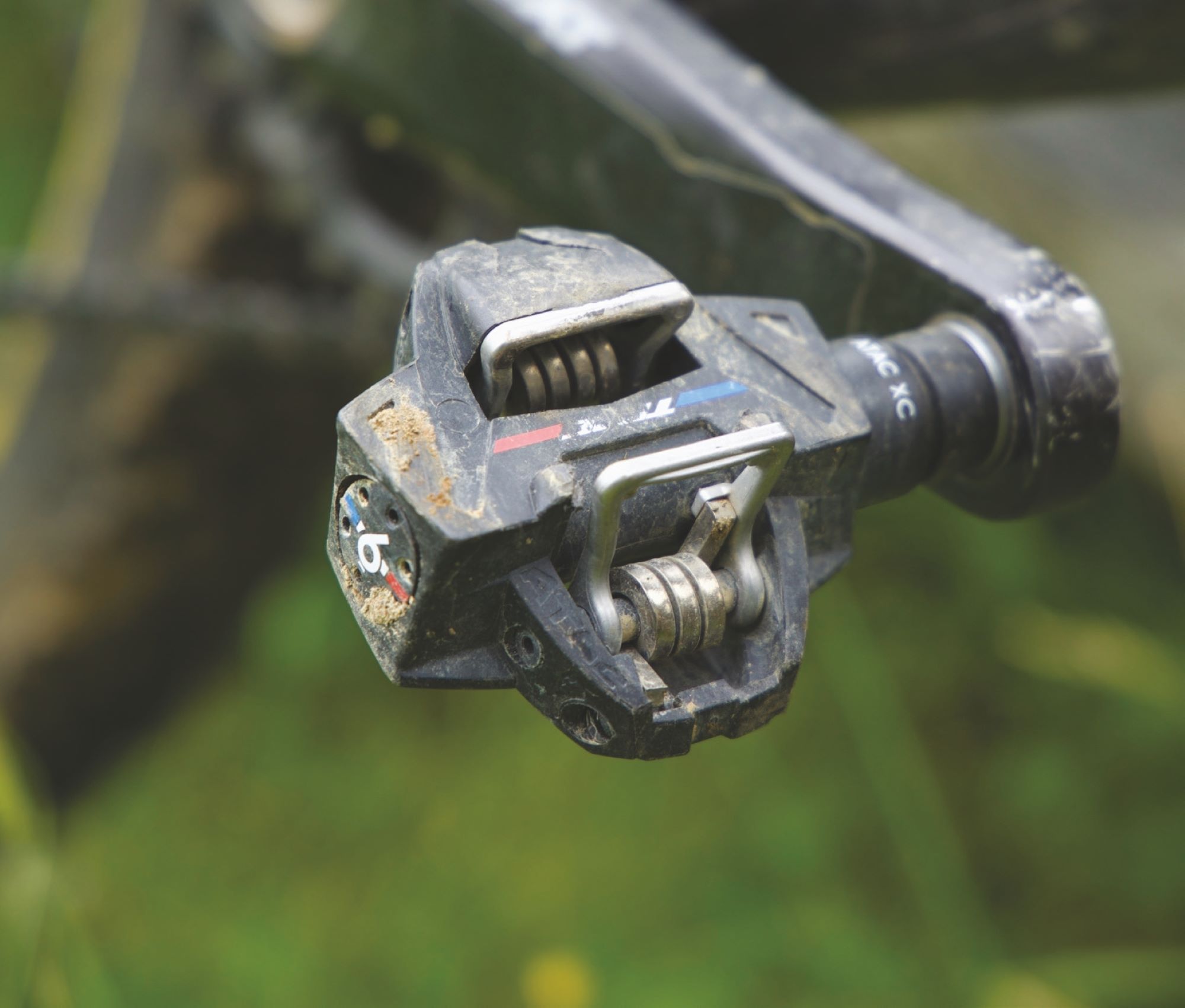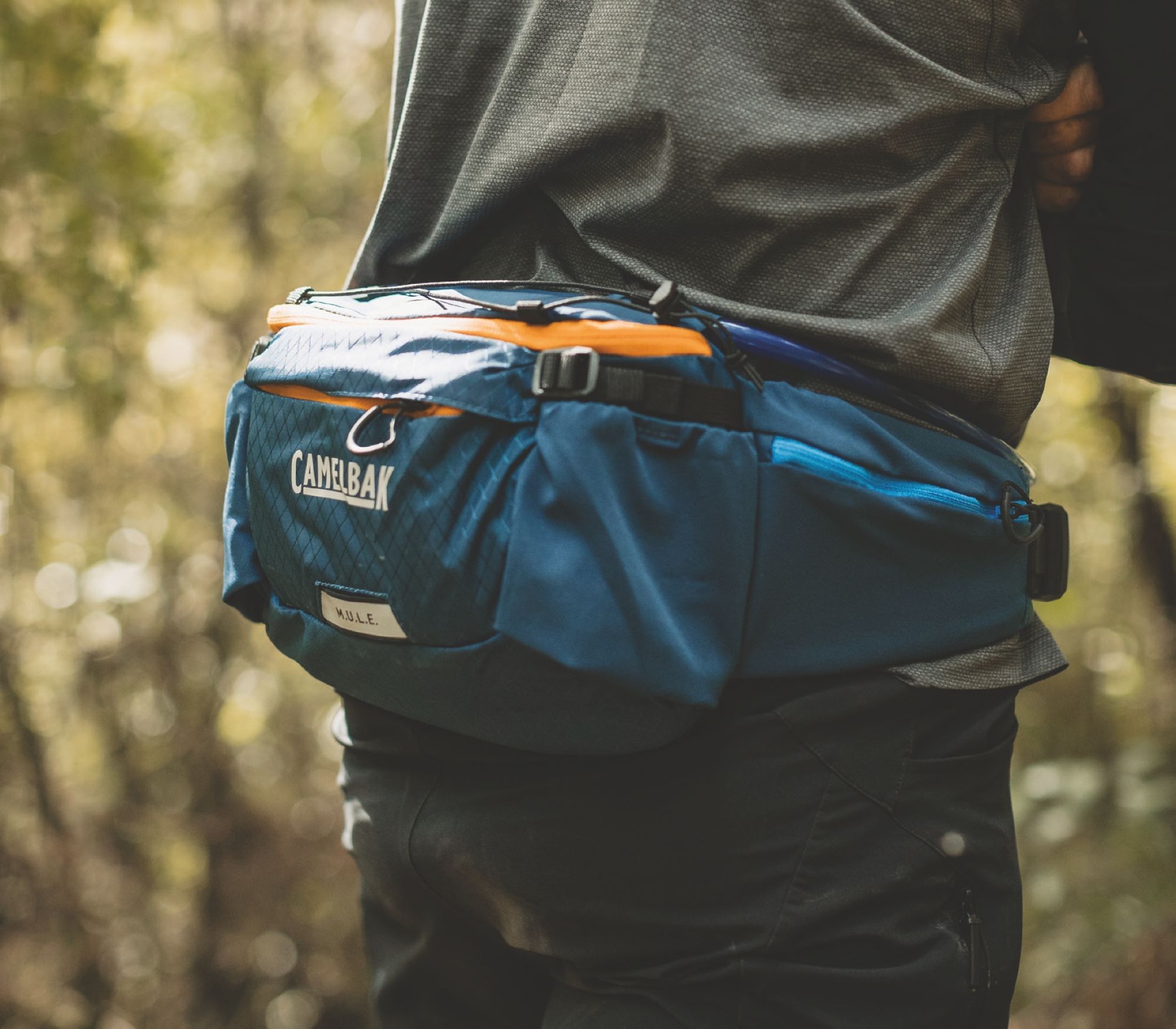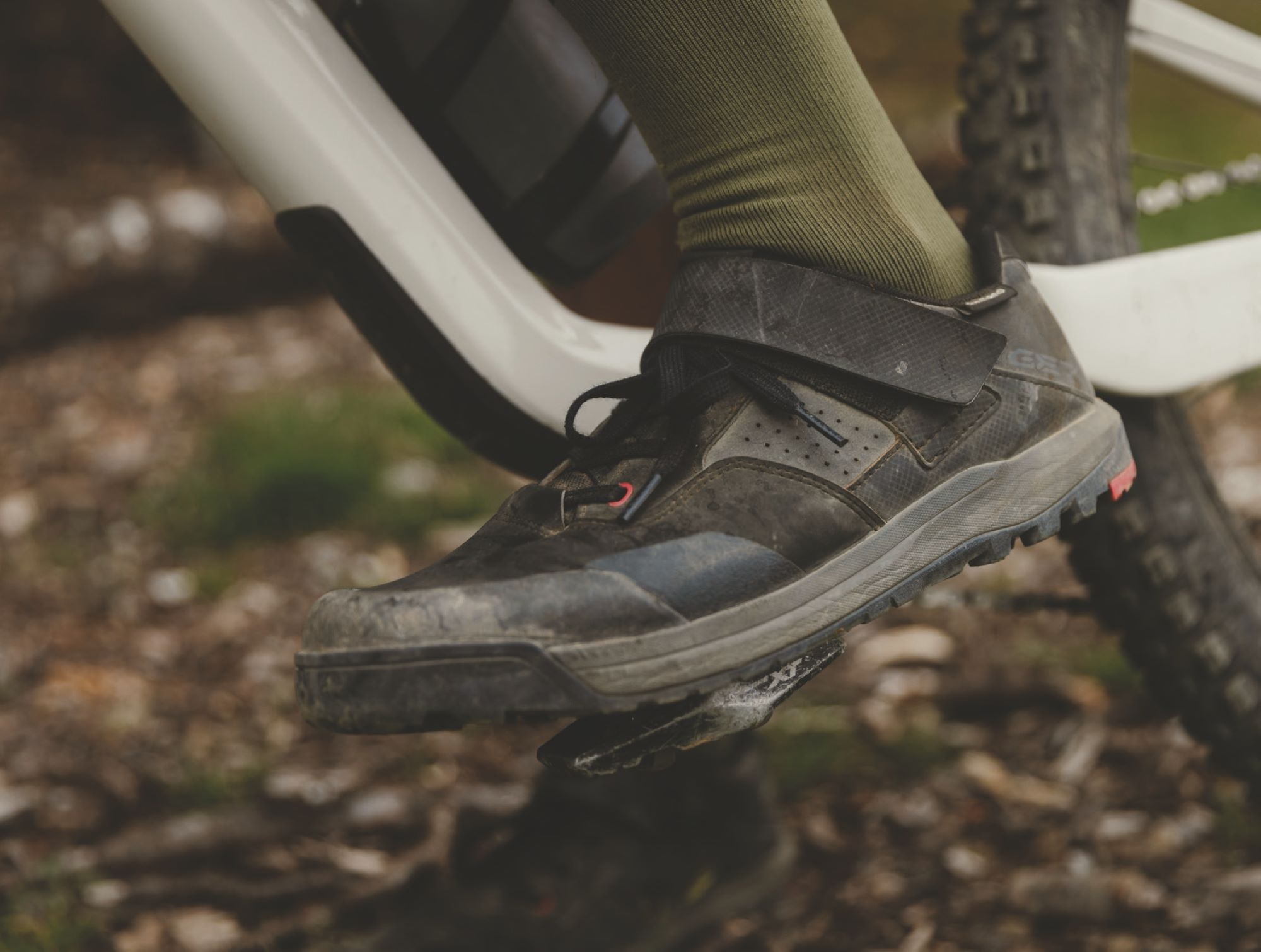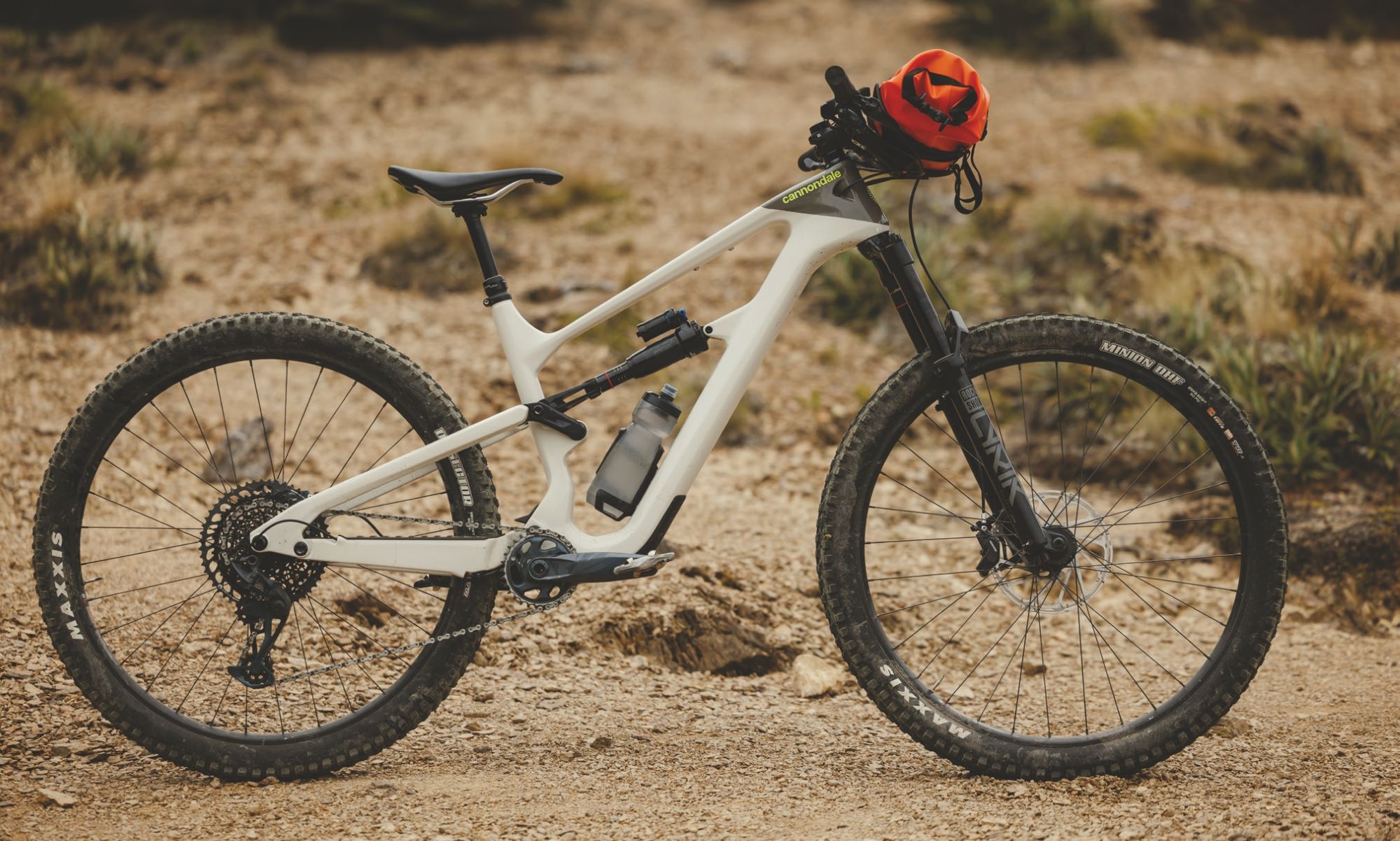Commencal Meta V5
Words Lester Perry
Images Bevan Cowan
RRP $10,000
Distributor Commencal New Zealand
Since its creation in the year 2000, Commencal has been a mainstay in the downhill racing scene. Max Commencal, the BMIC (Big Man In Charge), enjoyed earlier success with SUNN Bicycles, a BMX company he formed in 1984. By the early 90’s, SUNN shifted its focus to Downhill MTB racing.
Beneath names like Nicolas Vouilloz, Anne- Caroline Chausson, Cedric Gracia, and other greats, the SUNN Downhill team amassed multiple world titles aboard their innovative downhill bikes.
Under the Commencal brand, their riders remain some of the sport’s winningest to this day; at any World Cup Downhill, across all categories, you’ll likely see a Commencal rider on the podium. This hunger for competition drives the development and direction of the now global, direct-to-consumer brand. The Meta V5 is a product of their Commencal Enduro Project and the four years of development under team riders that preceded its launch.
Development
Applying the same development theory and methods that brought downhill success, the Meta V5 was created to be Commencal’s comprehensive Enduro Race bike. Commencal aimed to provide their racers with one platform that would excel across all scenarios they’re presented with over an Enduro World Cup season. Alex Rudeau proved their development process was on point, securing himself five podium finishes and third overall in the 2023 Enduro World Series. The proof is in the pudding.
Frameset
Keeping with Commencal tradition, the frame is 100% alloy like the rest of their range—not a carbon fibre in sight. Rolling on 29er wheels, with 150mm rear travel and 160mm up front, this bike strikes the sweet spot of travel vs. pedalling ability and agility. Carrying speed is key to Enduro and the V5 delivers.
An alloy frame would be a prime candidate for a threaded bottom bracket but, for whatever reason, Commencal has stuck with a bb92 press- fit style. In fairness, I’d rather have a press-fit in an alloy frame than a carbon one, so I guess they’ve landed in a bit of a middle ground on the V5.
The frame features a plethora of tubing profiles; there is not a single ‘regular’ round tube anywhere. Depending on location, each tube is shaped to achieve specific strength, weight and compliance. Under the top tube is an accessory mount, and there’s a bottle cage mount situated in a small channel indented in the downtube tube. As is customary on most bikes today, a UDH hanger graces the dropouts.
The front and rear triangles connect with a series of bolts, bearings, and pivots that make up the VCS (Virtual Contact System) linkage. Ten bearings are spread through the swingarm’s five pivot points. The swingarm has some smart subtleties: bearing caps help keep grime out and expander plugs in the pivot axles help keep them tight. The lower end of the shock features a flip chip, allowing for a small amount of geometry customisation.
Let’s get through the details before looking at my thoughts after a couple of months aboard the V5:
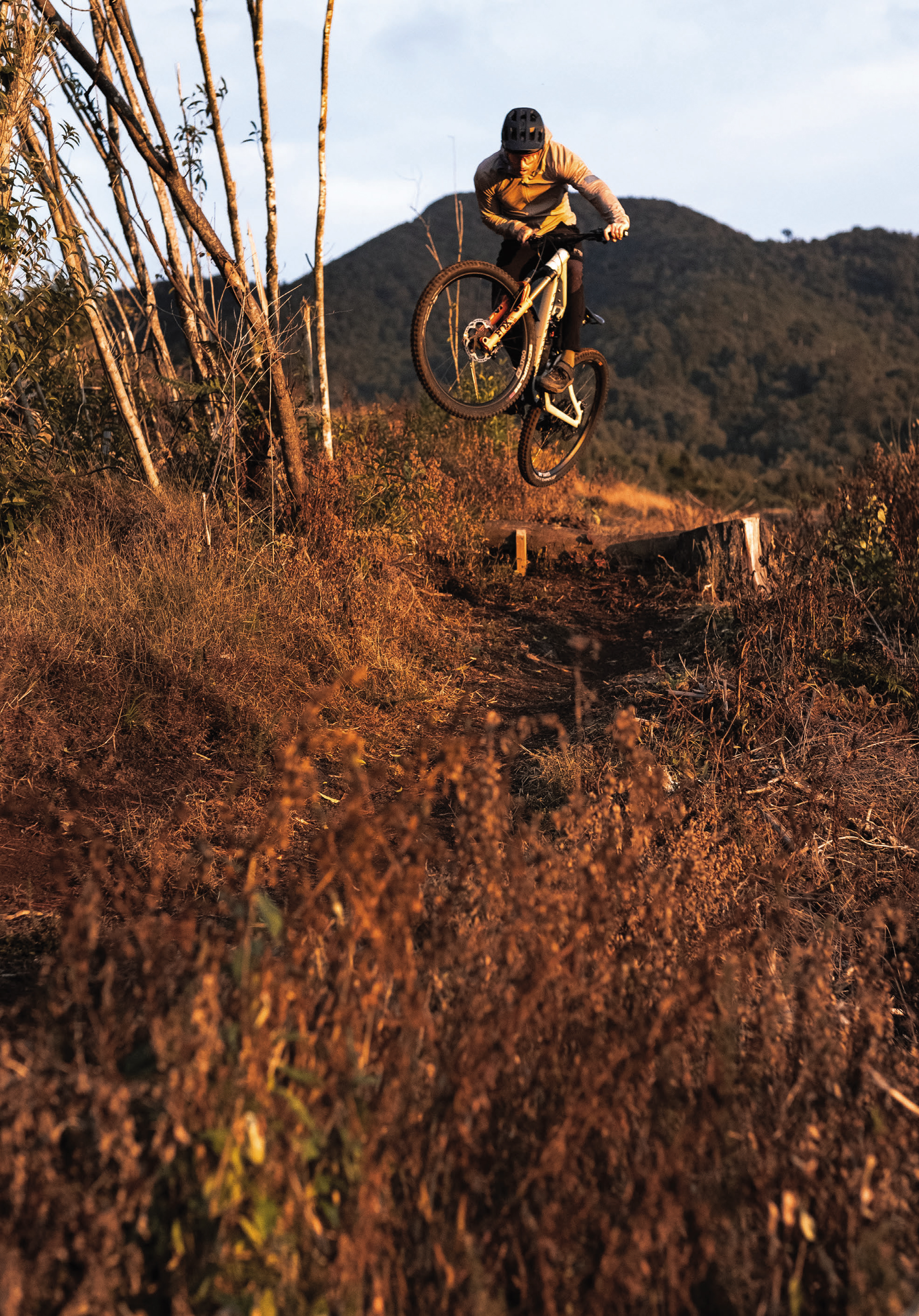
Geometry
Although nothing jumps out as too progressive or outside the realms of sensibility when looking over the geometry chart for the Meta V5, there’s a lot to like. There’s a flip chip on the lower end of the rear shock, and other than a cursory couple of rides in ‘High’ to confirm there’s no massive difference between the two settings. I’ve stuck with the bike in ‘Low’, as I’d imagine most riders would do.
There’s nothing crazy here; I’d point out a middle-ground head angle and reasonably steep seat tube angle. As is becoming customary with Commencal’s bikes, the stack height is above average and pretty big for a medium-sized frame, a trend that seems to be taking hold with some brands.
The Ride:
According to the Commencal size chart, at 176cm tall, I sit right at the top of the Medium recommendation and at the bottom of the Large. With a bike of this ilk and travel category, I chose to go smaller rather than larger, and settled on the Medium size.
A couple of weeks after exchanging a emails with Commencal about how and where I ride, how long I’ve been riding, and what sort of rider I consider myself to be, a pre-tuned Meta V5 arrived on my doorstep. Frothing to get out, I quickly mounted the handlebars in the stem, attached the front wheel, and was good to go; the assembly only took about five minutes, including removing the bike from the box. A quick driveway test confirmed the supplied setup felt like it was in the ballpark of where I’d like it to be; they’d even trimmed the bars to my preferred 760mm width — bonus.
To give my thoughts some context, compared to my usual ride, this bike comes in at 10mm less travel on either end, a 14mm shorter reach, a 10mm higher stack, a 2-degree steeper seat tube, and almost equal chainstay length and head angles. Considering the 30mm riser bar, my hands end up roughly 30mm higher than my bike – quite a lot. Weight-wise, the Commencal comes in a little heavier, but not by an amount that makes a difference to anything; it adds to the feeling of stability. Considering how similar the geometry is between my bike and the Meta V5, they’re poles apart in how they ride.
I get on some bikes, and everything clicks immediately; this was one of them. Although I initially felt the shorter reach and higher front end compared to my bike, I quickly forgot these differences and was comfy on the bike after just a couple of runs down a trail. Not once have I felt like I wasn’t in the correct position on the bike or had to shift to a particular body position to get the bike to do what I wanted; everything just seems to click nicely, and now has me questioning my usual setup.
The suspension settings, as supplied, 71 psi in the fork and 177 in the shock, were ideal for getting to grips with the bike; nice and balanced, with no surprises. A couple of rides in, as I got used to the bike and speeds increased, I added a little air pressure front and rear and, taking this into account, slowed the rebound and added a click of compression damping to both front and rear. The Meta V5 is a full-gas Enduro bike and, although optimised for descending, you still have to make it to the top of a hill before heading back down. The Meta V5 is not a spritely climber, but it gets there. Out of the saddle, while under power, the suspension firms up substantially and gives an excellent platform to push against, i.e. when tackling steep technical climbs or sprinting over a punchy climb, it does both well. When I’m ticking my way up a gravel road or a long, smooth single-track climb, I’m immediately reaching for the lockout on the shock; the firm pedalling platform and steep seat tube make the climbing position comfortable and efficient.
Descending is a dream, highlighting some savvy design and an equally impressive suspension package. The VCS linkage is a virtual pivot linkage offering super plush suspension that’s supple off the top, offering wicked levels of grip; through the mid-stroke, it feels pretty linear but still has a good level of support. Even though it has 150mm of rear travel, it feels more over big hits or flat drops as it firms right up at the end of the stroke, preventing any harsh bottom outs, and I can’t think of a time when I’ve actually felt an abrupt end of the travel.
With all the links and pivots involved in the VCS, the rear end of the bike is quite wide to accommodate it all. It’s so wide, in fact, that it’s quite normal to drag my legs on it while riding. Not to the point of being annoying, but it’s noticeable and will inevitably rub and mark the frame over time. Fortunately, the bike I received has a tidy ride-wrap installed, so the paint isn’t affected.
I find the front end stiffer than many bikes, and the suspension works in combination with this front-end rigidity and the flex of the back end to provide a ride that’s quite unique, but only in good ways. While charging through rough sections, the bike remains composed with amazing stability and with no harshness or the feeling of being deflected off obstacles or ‘pinged’ off square edges. The chassis floats across the chunder, reacting more to rider input than the trail feedback. Thanks to this, I felt less fatigue on long descents, feeling there was no need to wrestle the bike to stay on line or keep it where I wanted, I could just stand centred on the bike and let it do the work.
Considering the weight, travel and reasonably linear mid-stroke suspension kinematics, the Meta is surprisingly lively and is fun to pop off trail features and manual through sections; even though it’s such a sled, it strikes a surprising balance of high-speed downhill capability and mellow trail cornering agility and playfulness.
The overall balanced feel lends itself to aggressive and controlled cornering. Initiating turns or quickly changing direction is simple, not requiring any dramatic weight shifts to maintain traction.
Adding to the predictability and stability is some well-engineered flex in the back end, that works in harmony with the suspension. Much like the Cannondale Habit LT I reviewed a few months back, there’s an amount of lateral flex in the swingarm. Still, tuned compliance has significant advantages, particularly at this mid-travel level. It helps keep the bike composed in the rough and gets across off-camber more smoothly by assisting the wheel to stay on the ground rather than being deflected off bumps (where stiffer bikes would rely more heavily on just the suspension to move the wheel). I’m not sure this trait is necessarily faster in itself, but the resulting reduction in fatigue over the long run is certainly noticeable.
One thing that struck me early on was how quiet the bike is. Thanks to substantial chainstay and seat stay bumpers and tidy cable routing, the bike maintains a nice, dull sound when on the trails. By the look of those bumpers, the chain is still hitting them while slapping around, but they’re doing their job well and keeping sounds muted.
On my second ride, the frame developed the dreaded and much-publicised creaking in one of the pivots. Considering the bike had a pre- review strip down and grease, this was quite a surprise. Thankfully, after going through the involved process of getting to each pivot bolt and re-tightening them (it’s a total faff to do), the creak faded out. It seems the pivots will need some attention every 4-6 weeks, depending on the conditions they’re ridden in. I’ve had similar experiences on other alloy bikes in the past, and it seems to be part and parcel of alloy frames; when compared to a carbon frame, a bit more care and attention are necessary to keep pivots clean, tight, and creak-free, this Commencal is no different.
I’m not a fan of the Fidlock drink bottle that was supplied. Unfortunately, without customising a bottle cage, there’s no way to carry another bottle style in the front triangle. It’s much fiddlier than a standard bottle to put back in its holster after a sip. The saddle isn’t terrible, but it’s on the firmer end of the scale and, after a couple of hours pedalling up hills, it doesn’t agree with my backside; it may be my preference, but I’d like something a bit softer.
Like many others, the Commencal product managers missed a beat when it comes to the dropper post. At 175mm, it’s not the shortest drop around but, even with my 720mm seat height, a 200mm post would fit. Adjustable dropper posts are available, and I’d love to see one on this bike to maximise the drop and allow riders to fine-tune it to their needs.
The DT Swiss EX1700 wheelset hasn’t skipped a beat, and I continue to be impressed by DT’s pre-built wheelsets. The Schwalbe Tacky Chan tyres have been great for conditions at my local riding spots recently. The Ultra Soft (front) and Soft (rear) are a perfect combination, providing excellent traction in all scenarios and trails I’ve had them on. All things considered, they roll surprisingly well, although they’re showing signs of wear pretty quickly. I’ll be interested to see how they go in proper mud rather than the hero dirt of late, particularly as they’ve already lost their square edges.
Final thoughts
Riding the Meta confirmed that the old adage “fast is fun, fun is fast” couldn’t be truer for this bike. It’s easy to get it to go fast downhill, and I’ve found myself off the brakes through sections I’m usually slightly more apprehensive about. Combine this increased confidence with the agility and playfulness of the bike, and it ticks a lot of boxes for me. If you’re considering a new ride, the Meta V5 would be worth considering and, provided you’re happy to keep the rear end serviced, I’d confidently say that — much like me — you’d be stoked on this bike!
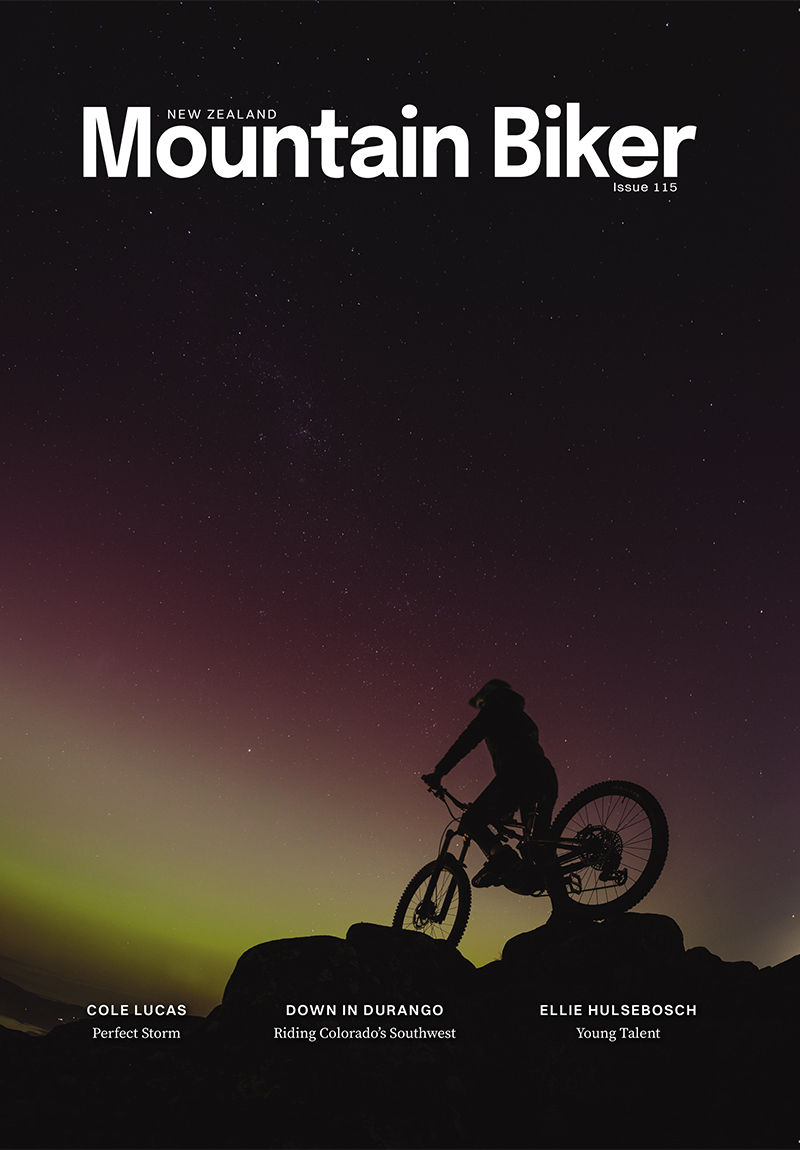
Abus Airdrop MIPS Helmet
Words Lester Perry
Image Cameron Mackenzie
RRP $579
Distributor Southern Approach
Full-face helmets underwent a revolution a few years ago, splitting camp. One took the full-gas, maximum protection, downhill helmet route, and the other headed down a more Enduro-focused, breezier, lighter-weight but marginally less protective road.
Although still popular with the Enduro crowd, lightweight full-face helmets are being snapped up by eMTBers all over the globe; the extra protection offering more peace of mind should a 20+kg bike smack you on the head during an accident.
The ABUS Airdrop MIPS hits my test scales at 804g, putting it towards the heavier end of the lightweight full-face category; however, as with most things, the scale alone doesn’t tell the entire story.
Internally, we find a traditional MIPs liner; it’s well-fitted to the shell and under regular use there is no noticeable movement between the EPS shell and MIPs liner. On the rear, we find a familiar dial adjust for a customised fit, although there’s no vertical adjustment to the harness, so it may not suit all head shapes perfectly. The internal padding is soft on the skin, and cheek pads snap into place simply and are easy to remove should you want to during a long, hot liaison – or for cleaning. The inside of the chin bar is lined with closed cell foam to help soften the blow should you take a big front on impact. This padding wraps up the shell slightly in a section in line with the wearer’s collarbones; the theory is to blunt the helmet’s impact on your collarbone should they make contact during a big crash. I haven’t put this feature to the test, but it does seem like it would work. The closure is a secure, tried and true, classic double-d-ring style; a somewhat fiddly but proven system.
A fashionably large and adequately adjustable visor is bolted in place but designed to “break away” in the event of a crash, drastically reducing its leverage on a wearer’s neck. The visor itself seems sturdy and has stood up to a bit of abuse; less could be said about many, more brittle visors out there.
Having reviewed other ABUS helmets previously, I went for the same S/M size, with a 52-58cm size range. The Airdrop is certainly a snugger fit, though, and I had the adjuster wound the entire way out. Even then, I found the shell was only just large enough for my head. Without trying it, the larger L/XL size shell would have been quite a step up, and I like the comparatively slim silhouette of the S/M size. Provided my head doesn’t grow then this size is comfy enough.
I was surprised by how much airflow the helmet offered, particularly considering the traditional MIPS liner usually disrupts airflow. The combination of large frontal air intakes, the strategically placed internal channelling, and the large rear exhaust ports worked exceptionally well.
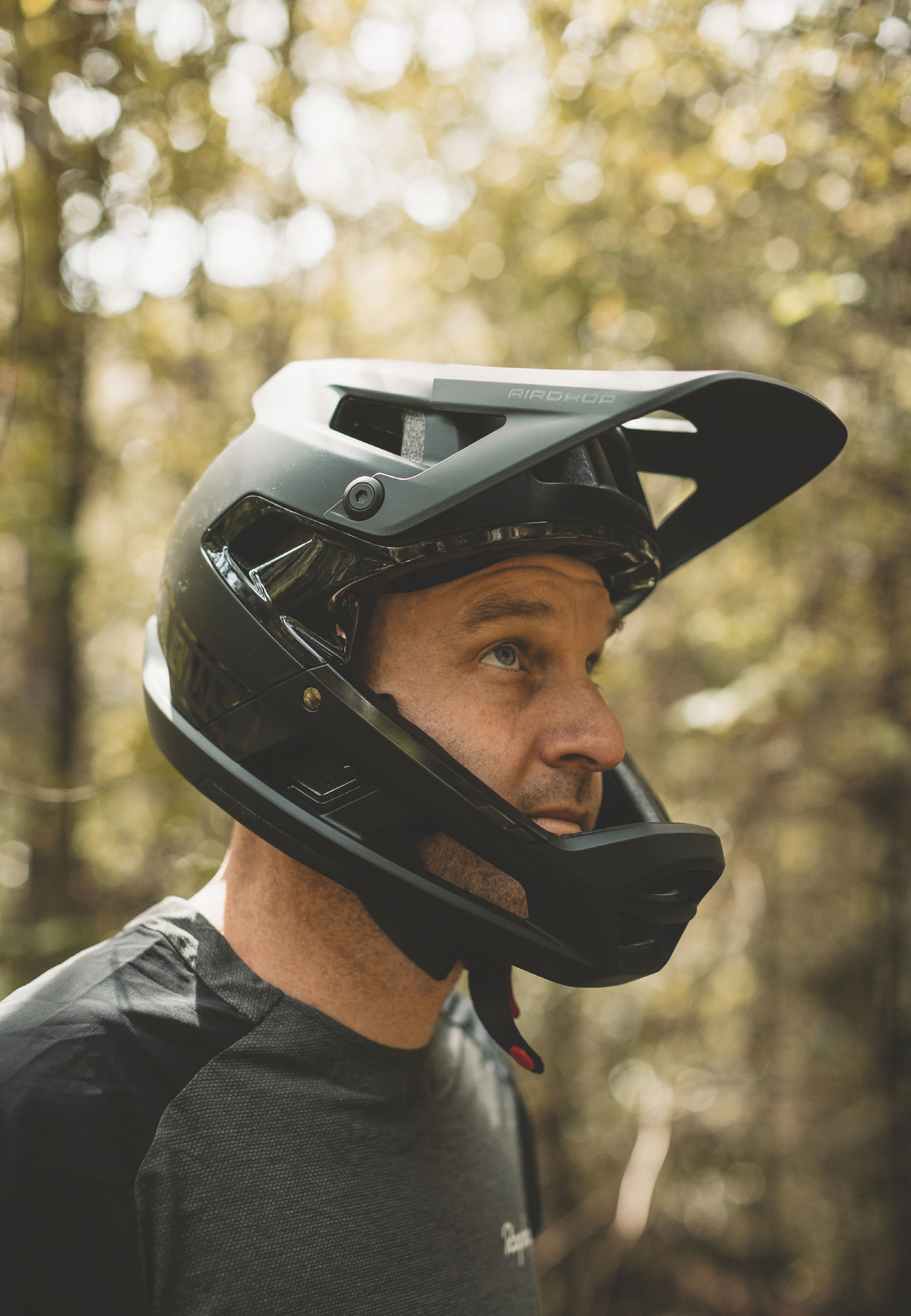
I was surprised by how much airflow the helmet offered, particularly considering the traditional MIPS liner usually disrupts airflow. The combination of large frontal air intakes, the strategically placed internal channelling, and the large rear exhaust ports worked exceptionally well. I could feel the air passing over my head, even on muggy late spring days; I found it more breathable than some helmets I’ve worn with more vents. Vents just above the ears are a nice touch, offering virtually uninterrupted sound, so you can easily hear your mates yelling at you to “get off the brakes!” Or maybe that’s just me?
I’ve yet to come across a full-face that doesn’t work well with goggles, and the Airdrop is no different. However, depending on how large your goggle frame is, there may be limited space from the top of the frame to the forehead of the helmet, so it’s worth checking whether your specific setup would work. Not all full-faces play nicely with glasses; however, should you want to go down that route, the two work just fine together on the Airdrop.
The Airdrop meets all the necessary safety standards here in NZ, but I wonder how much it exceeds them by? It’s something we’ll never know. Still, with fewer vents than some popular models and more ‘meat’ (and consequently weight) across key areas, my bro-science would tell me that this helmet may lean further toward a downhill helmet than some brethren. I won’t delve too deep into the subject, but there is a sticker inside the lid touting that ‘the chin bar meets ASTM F1952 Standard Certification’; essentially a certification for downhill helmets that are tested to a higher level than the usual standards we see.
The fact ABUS claims the chin bar passes this certification leaves some grey area as to whether or not the entire helmet meets the standard. This standard is tested across an entire helmet, not just a single area, like the chin bar. The bottom line is, the helmet is more than sufficient for its use case, and there’s some added comfort in the fact it also meets at least some of the ASTM F1952 standard.
I’ve been impressed with the ABUS Airdrop. It’s light enough, plenty breezy, has some nice features, and looks unique amongst all the popular models seen out on the trails. I’ve even had several questions and comments about how good it looks!
The fit won’t suit everyone, so if you think you’d be on the crossover between sizes, be sure to try both to ensure the best fit.
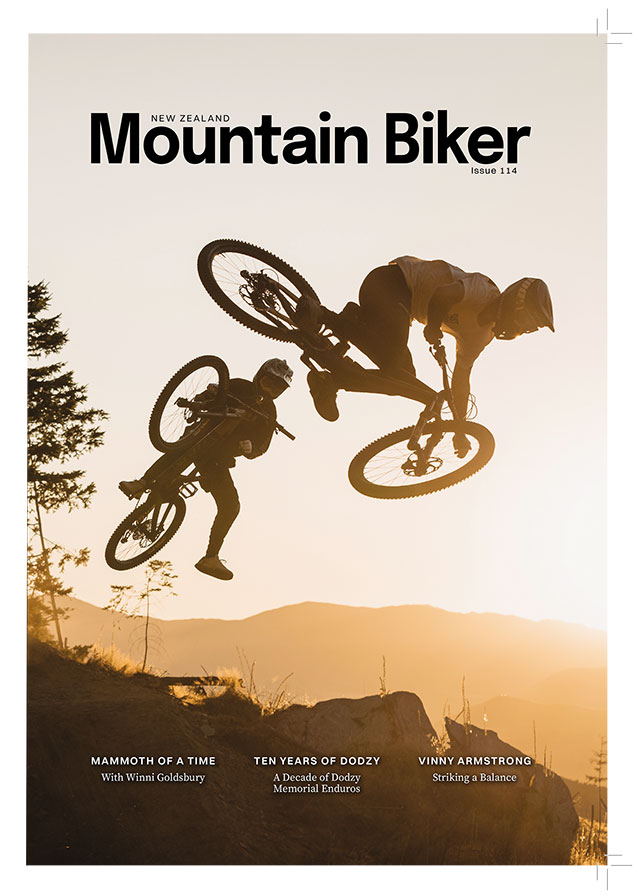
Weldtite Chain Lubes
Words & Image Lester Perry
RRP $19
Distributor Southern Approach
Weldtite has a storied history. Starting out in London in the early 1940s, it initially manufactured and supplied puncture repair kits to British and Canadian paratroopers who, once on the ground, were getting about on folding bikes.
Eventually outgrowing its facility, Weldtite shifted to Barton, by the River Humber in North Lincolnshire, where it continues to develop and manufacture a wide range of bike maintenance products, to this day.
A lot has changed in the world of chain lubricants over recent years. New formulations, wet, dry, light, drip or melt; there’s now a lube for whatever style of bike you ride and whatever conditions you ride it in, not to mention options for both human and electric assist bikes as well. Whatever the style of lube or the name on the label, they’re all attempting to achieve the same goals: quieten the drive train, increase its efficiency, maximise its lifespan, and not attract contaminants.
I’ve spent a few months comparing the merits of two similar – but distinctly different – Weldtite chain lubes. Using multiple bikes and varied trail conditions, I’ve garnered a good understanding of each lube’s drawbacks and benefits.
Weldtite Ceramic Lube
This is an all-weather lube with ceramic additives for optimal efficiency, helping to conserve precious watts and decrease drivetrain wear. Its low viscosity allows it to penetrate right into the links of the chain, and its various additives bond to the chain’s surfaces, creating a hydrophobic barrier to resist water and contamination.
It’s reasonably light and has a runny consistency, so care was needed while applying it. I found it easy to overdo it, leaving the entire drive train susceptible to build-up of dirt and other contaminants. It literally only takes a small drop on each chain link to do its job. Once I figured the sweet spot between ‘too much’ and ‘not enough’, this lube was great. As with other lubes, one key to gunk-free riding is to begin with a completely clean system (chainrings, chain, jockey wheels), then apply the lube, leave it to sit a few hours, and finish by giving the chain a thorough wipe to remove any excess sitting on the outer surfaces.
In dry conditions, the drivetrain stayed clean, smooth, and quiet for many rides, with minimal gunk on the chainring or jockey wheels. I’ve been surprised at how well the lube has lasted; it could go multiple rides before needing to reapply. In wetter conditions, I found it didn’t last quite as long, although the bonus in the damp was how little grime the drivetrain collected, certainly less than many lubes I’ve used.
On a mountain bike, I’d reach for this lube over the summer, in dry to variable conditions. I’d run this lube year-round on a road or gravel bike.
I’d say it’s a jack of all trades, master of none.
Weldtite All-weather Lube with Teflon™
This lube is designed to excel when the trails or roads are wet, or rain is falling. It has a marginally thicker consistency than the Ceramic lube but is still quite runny. The All-weather is a bit stickier than the Ceramic Lube, closer to a more traditional ‘wet’ style lube. Weldtite tells us the lube is enhanced with a ‘Teflon Surface Protector’ to assist in repelling water and contaminants.
A light application is vital – it’s not as sticky as some all-weather lubes, but if there’s much on the outer surfaces of the chain (or overspill on chainring or jockey wheels), these areas attract contaminants. As with the ceramic lube, I began with a clean chain and applied a thin layer across the chin, leaving a few hours to wipe off any excess before riding. With such a small amount needed per use, the 100ml bottle should last even the most frequent of riders for a long time.
Amongst my normal cruising around, I rode this lube on one big (by my standards) overnight mission – some 19 hours of riding split in two by a particularly broken sleep in a roadside shelter…. but that’s a story for another time. Across multiple surfaces and trail types, from groomed gravel to stodgy mud, my drivetrain got a good workout and offered a real-world glimpse of what this lube is all about. There was no sign of the chain drying out, and at no point did the drivetrain seem like it needed more lube, staying quiet for the entire ride. By the time I rolled back into my garage at home, there was some buildup of contamination on the chainring and jockey wheels, although it was not a concern given the conditions and hours ridden. Had I taken the time to give the chain and jockey wheels a quick once over after my first day of riding, I could have saved some precious watts being absorbed by some of that buildup.
Given its chequered reputation, it would be remiss of me not to mention the use of Teflon (PTFE) in chain lube. A portion of the bike industry is removing PTFE and related compounds from their products, claiming no justifiable case exists for their continued use. A solid body of evidence shows that the PFAS used in the manufacture of PTFE, and the PTFE itself, are growing global health concerns. Both compounds are termed ‘forever chemicals’ and cannot completely break down in the environment. There’s a host of studies and evidence online if you’d like to know more about why this is a concern.
So, where does that leave me with the Weldtite All-weather chain lube? I’d say it’s a jack of all trades, master of none. This lube quiets the drivetrain, withstands terrible weather, and lasts well, but the drawback is that it picks up a bit more muck while doing its slippery job than some lubes targeted toward more specific conditions. This could be right up your alley if you’re keen on one lube to use across multiple bikes without matching lube type to conditions.

SRAM Maven ULT Brakes
Words Lester Perry
Images Lester Perry & Callum Wood
RRP $622 per end
Distributor Worralls
It’s been a while since I came across a new bike component that, once bolted on, offered a noticeable performance improvement from its predecessor. Often new releases are more of “a tweak here, a tweak there, and a splash of paint” rather than a complete redo, ending up with something vastly better than what was offered before.
In the space of just 12 months, SRAM has done just that – offering two groundbreaking new ranges, first with the launch of the Transmission ecosystem in March 2023, and now with the recent release of the Maven series of brakes.
The first and fundamental change that SRAM made at the outset of its quest for top performance was to design the system using mineral oil rather than its traditional DOT fluid. DOT fluid absorbs moisture over time, and its use means more regular brake bleeds as the oil’s properties eventually change as moisture is taken on. After a couple of years, the seals, particularly in the lever, needed replacement as they are ultimately eroded or swollen by the DOT fluid, rendering the brakes useless. Unfortunately, the cost to replace the seals is about equal to just replacing the entire lever (unless you do the job yourself), so guess where all these old brakes end up? Mineral fluid isn’t corrosive and doesn’t absorb moisture like the DOT so, theoretically, less maintenance is required, and the brakes will last a lot longer.
The combination of the new seal material and the mineral oil offers better performance across the heat spectrum in which the brakes operate. From the depths of a Queenstown autumnal inversion layer – where brakes may never heat up a lot – to lengthy laps on Whistler steeps, the idea is to offer a brake that performs more consistently across a wider variety of running temperatures and with less maintenance. The new seals and use of mineral fluid, combined with larger pistons and a new, gargantuan calliper, seem to have achieved this – from my experience so far.
For a brake to be powerful and consistent, it needs to keep enough heat in the system without overheating or excess cooling; not be too hot, not too cold, just right – like a good bowl of porridge. The greater thermal mass in the Maven calliper takes longer to heat up but, by design, balances the peaks and troughs of temperature, maintaining a more consistent and optimal temperature, ultimately providing a more consistent braking performance regardless of how hard you are on the brakes.
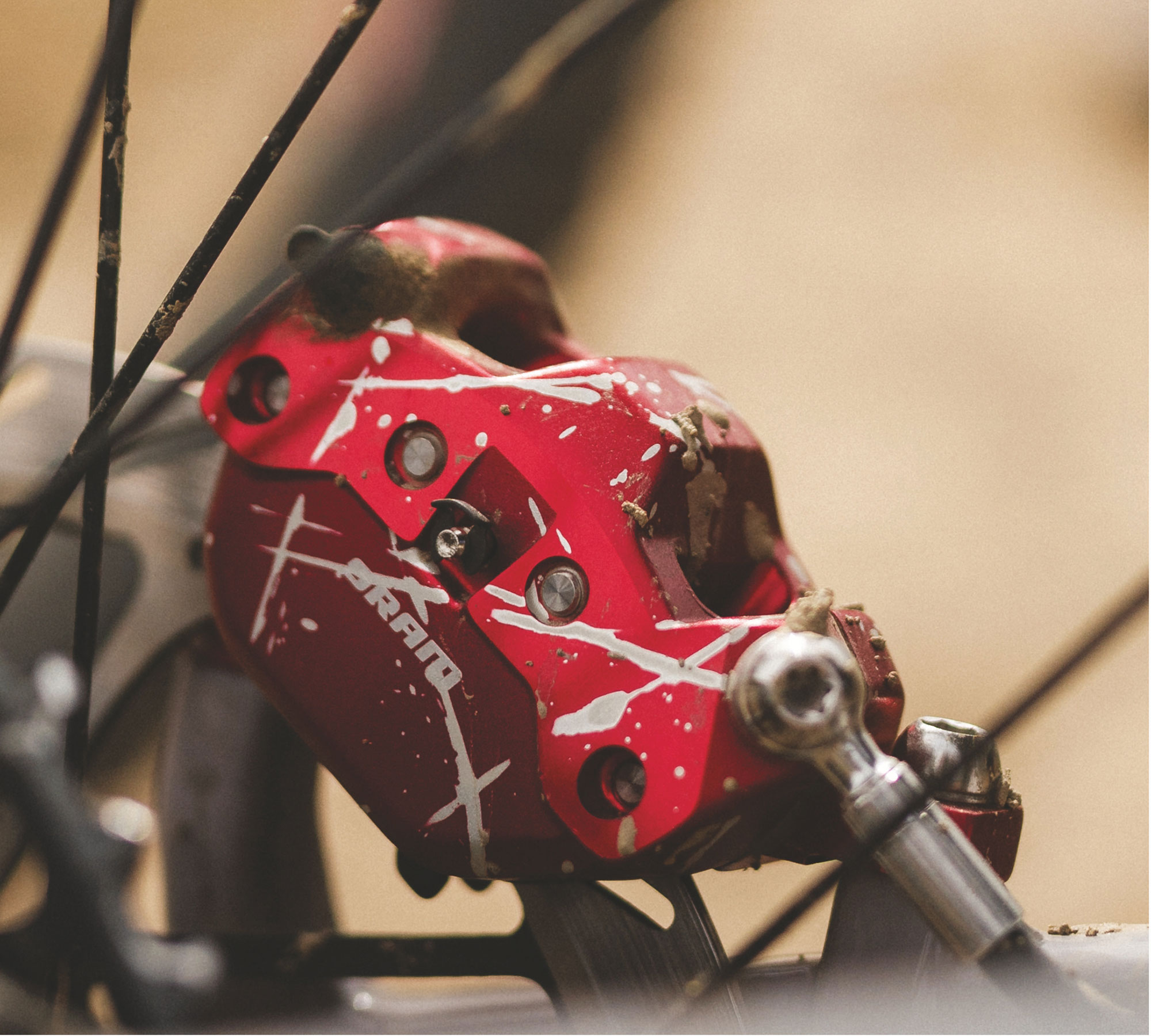
There’s a nice, solid, woody feel, and you can tell when the pads contact the rotor. There’s a familiar feeling of modulation, just like other high-end SRAM offerings.
We installed a set of Maven ULT on my daily driver, a Trek Slash, and over the past few months I’ve been figuring out what they’re all about. I’ve been running the stock organic pads and 200mm HT2 rotors. In the past, with SRAM brakes, the stock organic pads would be first to go, instantly upgrading to a sintered option. In this case, I’ve had no complaints with the Maven’s stock organic pad compound. Apparently, like previous SRAM offerings, the sintered pads come into their own in wet conditions, but so far I haven’t seen the need to put the sintered pads to the test on these brakes.
There’s a limited edition Maven Expert ‘red splash anodised’ colourway that Liam (editor) has been running but, honestly, that red would have clashed brutally with my orange bike, so the polished silver and black version ULT suits my setup perfectly – and we all know looks are part of the performance package, right?
The lever feel is not too dissimilar to the latest SRAM Codes. There’s a nice, solid, woody feel, and you can tell when the pads contact the rotor. There’s a familiar feeling of modulation, just like other high-end SRAM offerings. With some heat in the system at speed, the lever remains comfortably consistent and doesn’t wander or pump up. Wet weather is no bother either. The combo of the 200mm rotor and the huge pad contact area provides awesome wet-weather power.
It’s nice to see a slight tweak in how the brake hose exits the lever body; compared to the Code’s ‘Stealth’ levers, the hose comes out of the lever and angles away from the handlebar rather than towards it like other Stealth style brakes. Having ridden bikes with the standard, angled ‘Stealth’ levers and their regular ‘slap’ noise as the brake hose smacked on the bars, I was glad to see this minor tweak. I’ll be interested to see if this change rolls into the rest of the ‘Stealth’ levers over time.
The Maven ULT edition features lever reach and pad contact adjustment. Although the lever looks quite similar to the Code Stealth lever, inside the lever body we find the necessary differences, including piston size, to optimise for the Maven calliper’s oversized pistons.
My favoured setup is to have the pad contact wound completely in (so the pads contact quickly) and the lever wound far enough in that it ends up near parallel to the handlebar, allowing for minimal reach and only a small lever throw before pads engage. The lever pull feels slightly firmer than a SRAM Code and considerably firmer than a Shimano brake. It’s a matter of getting used to it rather than better or worse in my book, and I’ve been running Shimano 4-pot brakes up until this set arrived.
The Maven is touted as providing almost 50% more stopping power and requiring about 30% less force on the lever to deliver the same power as the Code Ultimate brakes – some heady stats that, before riding them, I found a bit hard to swallow. After a couple of months aboard the brakes, however, I can’t argue with these numbers; there is a serious amount of stopping power on tap and my forearms aren’t complaining.
In seasons gone by, it’s been common to see downhill and enduro racers’ bikes fitted with the largest rotor size they could squeeze into their frames. Part of the impetus behind making the Maven’s so powerful was the aim to be able to scale down the power by running smaller rotors. Smaller rotors are less susceptible to rock or debris strikes, so staying straighter and having so much power on offer gives a rider the ability to tune their power to their needs depending where or how they’re riding.
With no worry of underpowered or overcooked brakes, there’s no reason not to brake later towards turns or go deeper into a chute before braking.
Weight-wise, there’s an additional 60 grams per end on the ULT above a comparable level Code brake (calliper, hose, lever); my trusty calculator tells me that’s a 20% increase. It is considerable, especially when most of the extra weight is in the calliper. In fairness, depending on what size rotors are fitted, and whether or not they require adaptors, you could end up with a similar (or even lighter) total system weight compared to a Code with larger rotors. But, with more power and more consistent performance.
As you see, there’s a load of tech to unpack with an entirely new offering like the Mavens, but if what you really care about is how these units work in the real world, then read on.
There’s no doubt these brakes are the gruntiest I’ve used. I’ve ridden several powerful gravity- oriented brakes, but by no means a majority of what is available. The Mavens have surprised me, not just with their raw power but with how consistent the feel is; every time I’ve pulled the lever, the feel is the same and, even on longer runs where other brakes have suffered with heat issues or cooked rotors, I’ve learned to rely on the consistency of the Maven.
With immense power comes immense responsibility. Traction is more critical during heavy braking, and part of this is maintaining body position – something that takes some adjustment. With no worry of underpowered or overcooked brakes, there’s no reason not to brake later towards turns or go deeper into a chute before braking. Braking in a shorter distance means higher forces on the body and tyres over a shorter time span than lesser brakes – think a Stab rather than a Slice – and certainly something that takes some time to become familiar with.
Anchors on = slow down. Full stop. No story, straight to bed.
It’s taken some time to adapt my riding and change my ingrained habits to make the most of the Mavens, but it does feel like if I were against the clock, I’d see some time savings, particularly on high-speed and steep tracks.
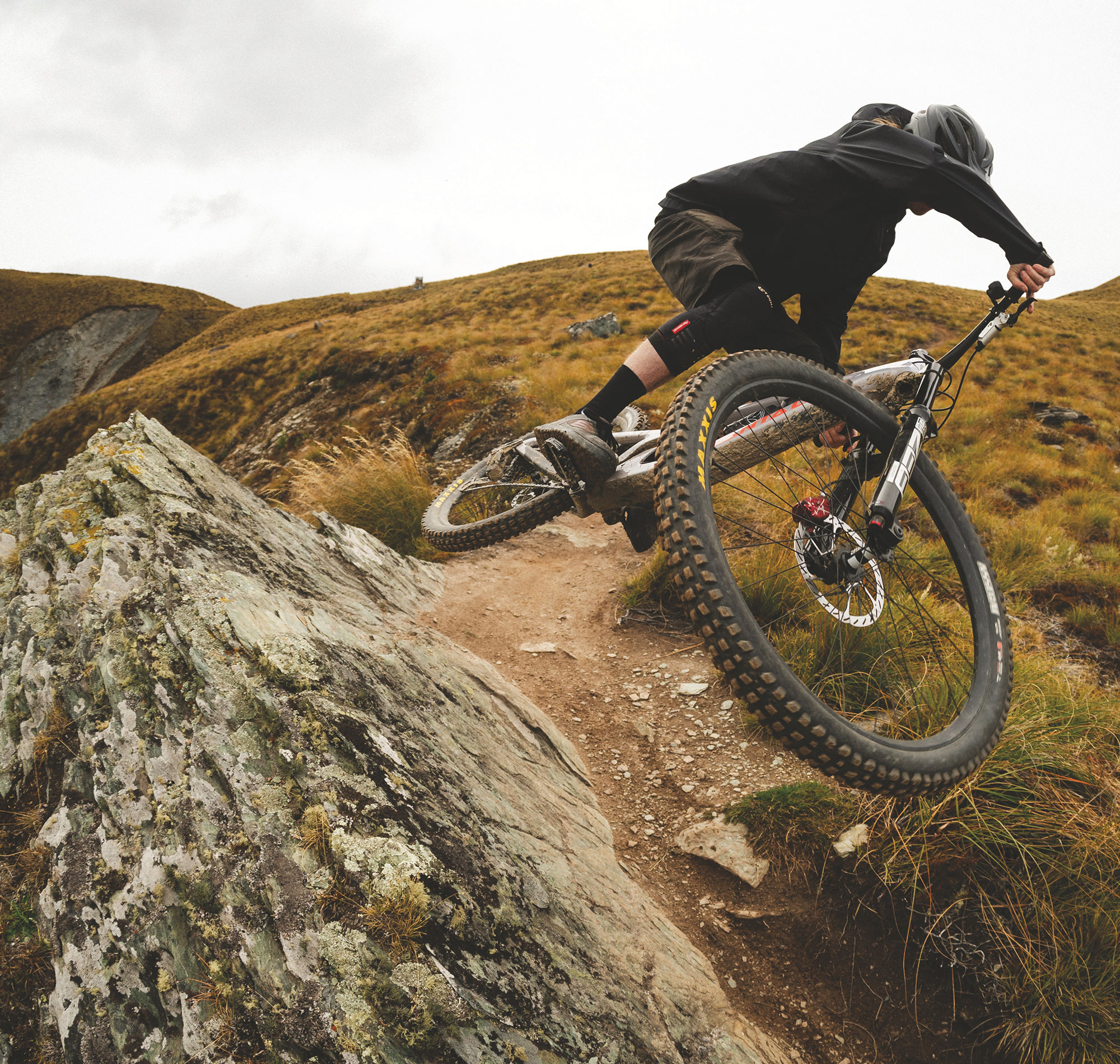
With some heat in the system at speed, the lever remains comfortably consistent and doesn’t wander or pump up. Wet weather is no bother either.
On most eBikes I’ve ridden recently, the brakes have underwhelmed me. An adequate brake has often been let down by an inadequate rotor, and it’s been quickly cooked, rendering it nearly useless. Generally the brakes just aren’t consistently grunty enough for the weight they need to slow down. A note to product managers: a 180mm rotor doesn’t belong on an eBike! The additional heft of a complete eBike system (rider, gear, bike) makes a set of Mavens for eBike use a total no-brainer and a worthy upgrade.
As good as the Mavens are, they’re not for every bike, and for sure, they’re too powerful for some scenarios. In slick conditions, I think I’d like to try smaller rotors to detune their bite somewhat. Such powerful brakes make it a bit harder to keep the wheels rotating under braking when trails are super wet, and lockups come easy when there’s this much power at such little effort. Likewise, unless the brakes are fitted to a downhill bike, or you’re riding long, steep trails on an Enduro bike, then you’ll likely want to de-tune them to the point where their performance (outside of the mineral oil and heat advantages) would put them in line with a Code or similar brake. On anything less than a balls-to-the-wall Enduro or Downhill bike, where maximum power isn’t essential, I’d be reaching for a Code or something similar.
Spending time on these brakes has got me thinking; SRAM now offers eBike tuned suspension (under the Rock Shox brand), transmission drivetrain, Maven brakes, and even a collaboratively developed eMTB motor. Combine these bits with other brands in the SRAM family: such as ZIPP wheels, Truvativ cockpit, Time pedals, and a Hammerhead bike computer. These are all arguably top-shelf and market-leading (or close to it) items that all suit the eMTB market to a tee. There are only two pieces to the puzzle missing: a good set of tyres and a frame…. Hmmm what will the future hold?

Wheelworks TrailLite Carbon
Words & Image Lance Pilbrow
RRP $3600
Distributor Wheelworks
Way back in November 2022, I was lucky enough to get my hands on not one, but two sets of Wheelworks’ new wheels to review. These were the Flite Trail model; one set in carbon and another in alloy. The idea was to do something of a side-by-side test on each pair over the summer and write something up for print after giving them each a good thrashing.
Needless to say, they both flew through the tests (and I did an unusual amount of wheel and tyre swapping that summer). At the end of that I was a little torn; the carbons were lighter, stiffer and no doubt, won on bling, but the alloys provided serious value for money, and Wheelwork’s after (and before) sales support meant that either way, you would no doubt be a satisfied customer.
Even better, though, was the opportunity to hold on to one of the sets for a long-term review. “Are you interested in holding onto these $3000 wheels for a bit longer?” they asked. “Ah… Um, yeah!” (What kind of question is that?) By now I had grown quite attached to the carbon Flite Trail wheels, and though I knew one day I would inevitably have to give them back, I was going to do everything I could to put that day off for as long as possible.
Many readers might be unaware that long-term reviews of high-end products are not all that common in this industry. Often, something arrives, you have it for a month and then it’s back on the courier again to the distributor to be used in a demo fleet, or to be sent to another media organisation for them to do their own review. It’s just the way the industry works. However, these long-term reviews are the sort of reviews I think most people would like to see more of.
We all know most products will work just fine for a month, but a year or 18 months down the track? That’s when the cracks begin to show, and that’s the kind of information you really want to know when you open a magazine for advice.
So, enough background, but suffice to say, props to Wheelworks for believing in their product enough to trust it to be reviewed over almost 18 months.
A quick recap: the TrailLite Carbon wheelset comes in at 30mm internal / 36mm external width and it runs 28mm high. The wheelset I rode weighed in at 1650g grams including rim tape and valves installed. The carbon rims were matched to Wheelwork’s own Dial hubs and laced with DT Swiss Aerolite spokes. Mine came with red decals on the hubs, a small red ‘TL’ (TrailLite) icon, and a larger, silver Wheelworks logo that follows the arc of the rim. These are all customisable to match whatever colourway your bike is, because we all like to be matchy-matchy. They came pre-taped and with valves installed.
As I mentioned in the earlier review, Wheelworks really are all about wheels. That’s their sole focus, and that focus is part of what makes purchasing a set of wheels more engaging than just scrolling through an endless list of options on the internet. It’s personal. Prior to getting the wheels, I spoke with their team about my riding style, bike, weight, and what I was hoping to achieve or improve over my current set up. This conversation dictated the build, and having their expertise guide the process means that, as a buyer, you are going to be massively confident in what is a significant purchase.
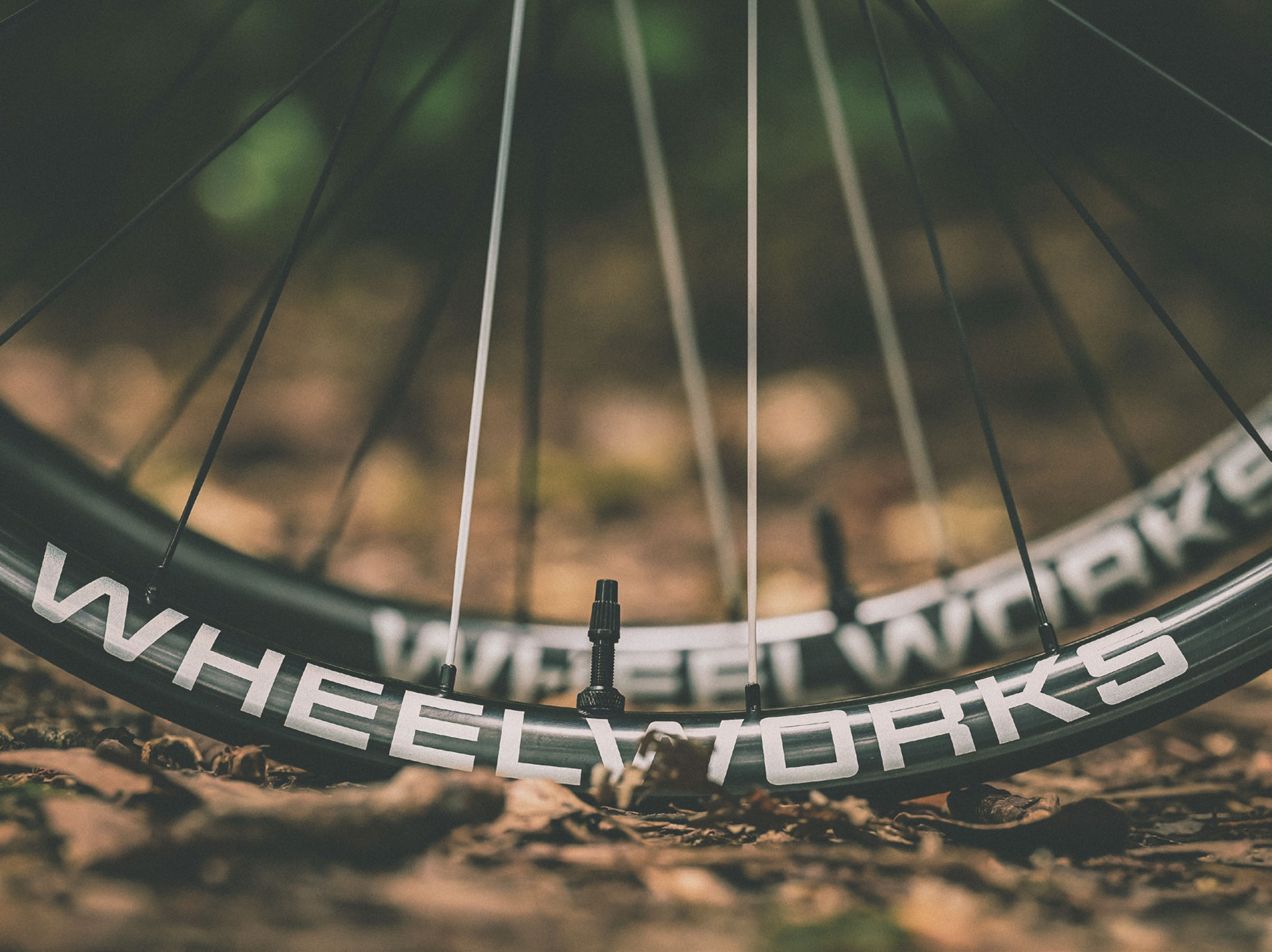
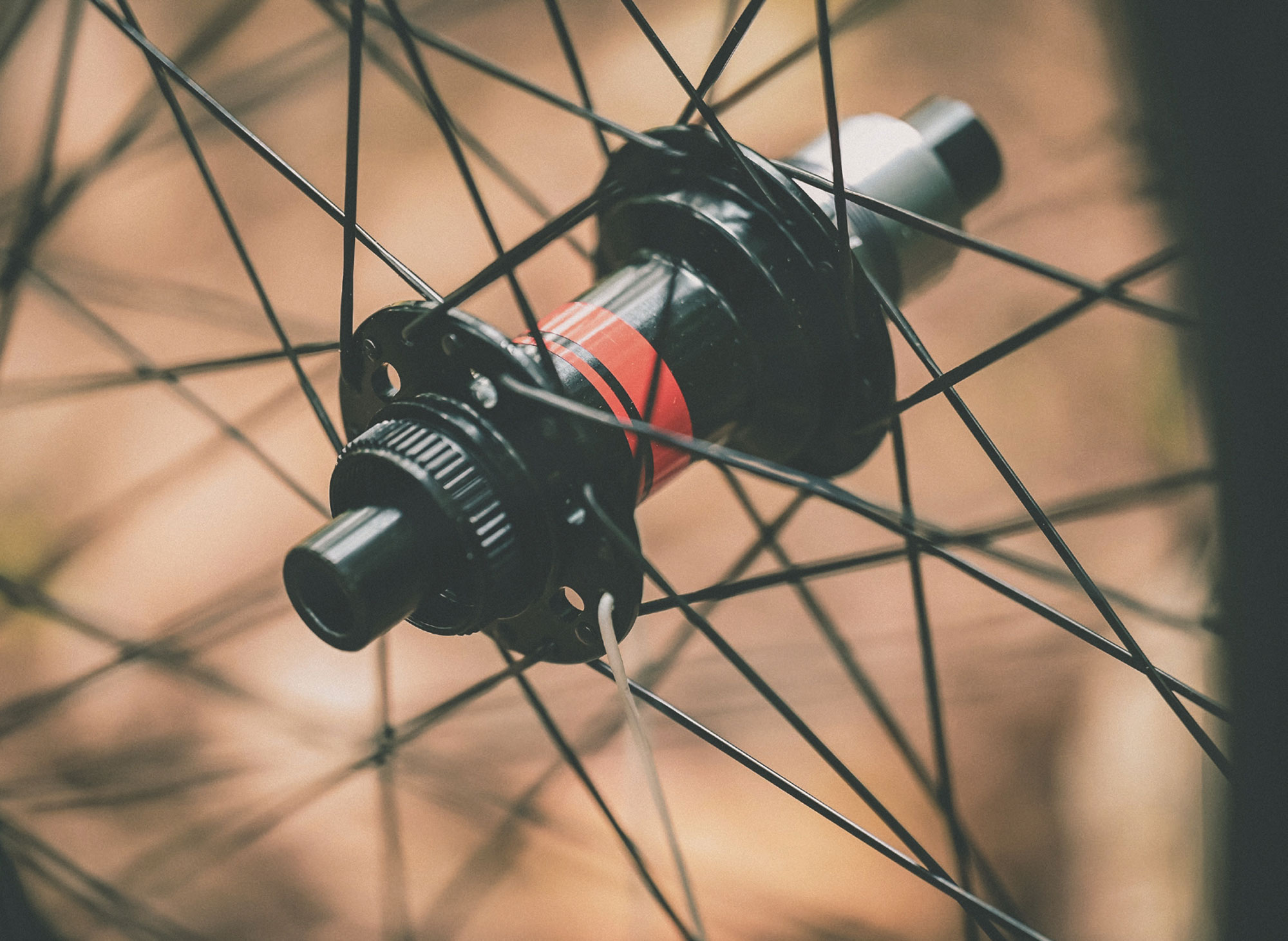
after 18 months of testing they really are still running as good as new; a real testament to the strength and layup of the carbon, and the craftsmanship involved in the build.
So, 18 months in, how did they fair? Well, I’ve got to be honest… the Wheelworks decals have started to show some signs of wear. A travesty! Jokes aside, that is quite literally the only thing I can fault them on. Over the review period, I rode a Whaka 50, a Whaka100, some Enduro, as well as 18 months of just everyday regular riding. In that time I cased more jumps than I would like to admit and did zero maintenance on them. I had no reason to. In terms of ride quality, what I was most taken aback by was the impressive lateral stiffness and how that enabled me to track a line through uneven terrain; and the awesome acceleration they enabled.
When the day finally came to send them back, I thought I should see just what state they were in, just in case I needed to send an apologetic email to the Wheelworks team before they unboxed them at their end. Grabbing a few zip ties to make an impromptu wheel alignment jig, I realised that, yep, they’re still dead straight. I ran my fingers over the Dial hub bearings and, yep, still silky smooth – smoother in fact than when they even arrived. I am honestly really impressed. To be fair, these are a $3600 product so, yeah, I would expect them to be faultless, for a good long time. But mountain biking is a sport that is tough on gear. We seem to keep on asking our gear to be lighter, whilst also being stronger – and wheels are a perfect example of this. At some point, something has to give…. Unless there is a real commitment to maintaining quality and not cutting corners. I think the Wheelworks wheels hit the sweet spot with this. As I said, they weigh in around 1650gm. I think this is bang on for most trail riders. They feel light enough to have that ‘zip’ about them (and to also feel like you have a slightly unfair advantage over your mates in the Whaka100), but clearly still enough strength to go the distance. I wouldn’t say I ‘abused’ these wheels (especially not on record as I would quite like them to send me other wheels to review… ahem… Berd’s?) as, to be honest, I’m just not that sort of rider, but I like to think I ride pretty hard when I’m in the zone and often kid myself into believing I’m a better rider than I actually am…. That combo means that at least once, on most rides, I have that moment of wincing as I slam into a root or rock and think “doh! that is going to be a cracked rim.” But, after 18 months of testing, they really are still running as good as new; a real testament to the strength and layup of the carbon, and the craftsmanship involved in the build.
All in all, this is probably one of the least surprising reviews most of our readers will read. My final thoughts after 18 months of solid testing; Wheelworks wheels are great. About as surprising as saying water is wet. Wheelworks have built a business based around their reputation; a reputation for building consistently solid wheelsets, for backing them up with an outstanding warranty and after sale support and, ultimately, for creating a culture of really valuing their customers. When you do that wheelset after wheelset, it’s no wonder they are so consistently recommended.

Bosch SX: Is this the new natural?
Words Nathan Petrie
Images Cameron Mackenzie
Looks can be deceiving. Something may appear small or neat, but take a peak under the hood
and you’ll find something much greater
In the bike world, we lust after the lightest (and latest) technology but, at the same time, we never want to give up that purity of the ‘natural’ ride feel. At the forefront of our communal infatuation with ‘bike porn’ is the eBike. Is it possible to embrace the technology without giving up on the simple joy we get from pedalling a bike?
Since Covid, eBikes have become commonplace on our trails and the daily ride for many of us. The maturing market now provides a wide range of eBike products for every style of rider. From full-power to lightweight motor options, a variety of battery sizes, and matched with different bike brand geometry. Bosch has led this charge and the arrival of their Performance Line SX system in New Zealand is the next phase of this evolution.
When the opportunity came through to test ride the new Mondraker Dune R, equipped with Bosch’s Performance Line SX, my interest was well and truly piqued. My current bike is fitted with the Performance Line CX, and I knew the SX was a light-weight system, so was keen to see how it would compare. We headed for the rugged terrain of Matangi Station in Alexandra, to put it through its paces; the perfect proving ground for both the system and bike with steep climbs, tight pinches and rocky single track.
My most obvious question was how the SX motor would feel in terms of assistance compared to my experience on the Performance Line CX. Would it feel underpowered or too much of a jump down? How natural would it feel to ride? I was also interested to see how you use the modes. For the type of riding I do, I usually ride my CX bike in the two lowest modes, Eco and Tour, but I wondered if I’d need to use eMTB or Turbo? Or, if I stuck to my usual modes, how fast would I be able to climb up stuff? Would I feel like I was going a whole lot slower? Would the SX system experience be up to Bosch’s usual high standards?
I put the motor to the test straight out of the car park, climbing up a steep four-wheel drive track to access the trails. I didn’t expect the SX to be as strong as a full-power motor like the CX but it was easily powerful enough going up. I didn’t need to switch to eMTB or Turbo mode. Even on the loose gravel surface, where you can easily lose traction on the steep sections, the bike performed well and I could push through without having to get out of the saddle.
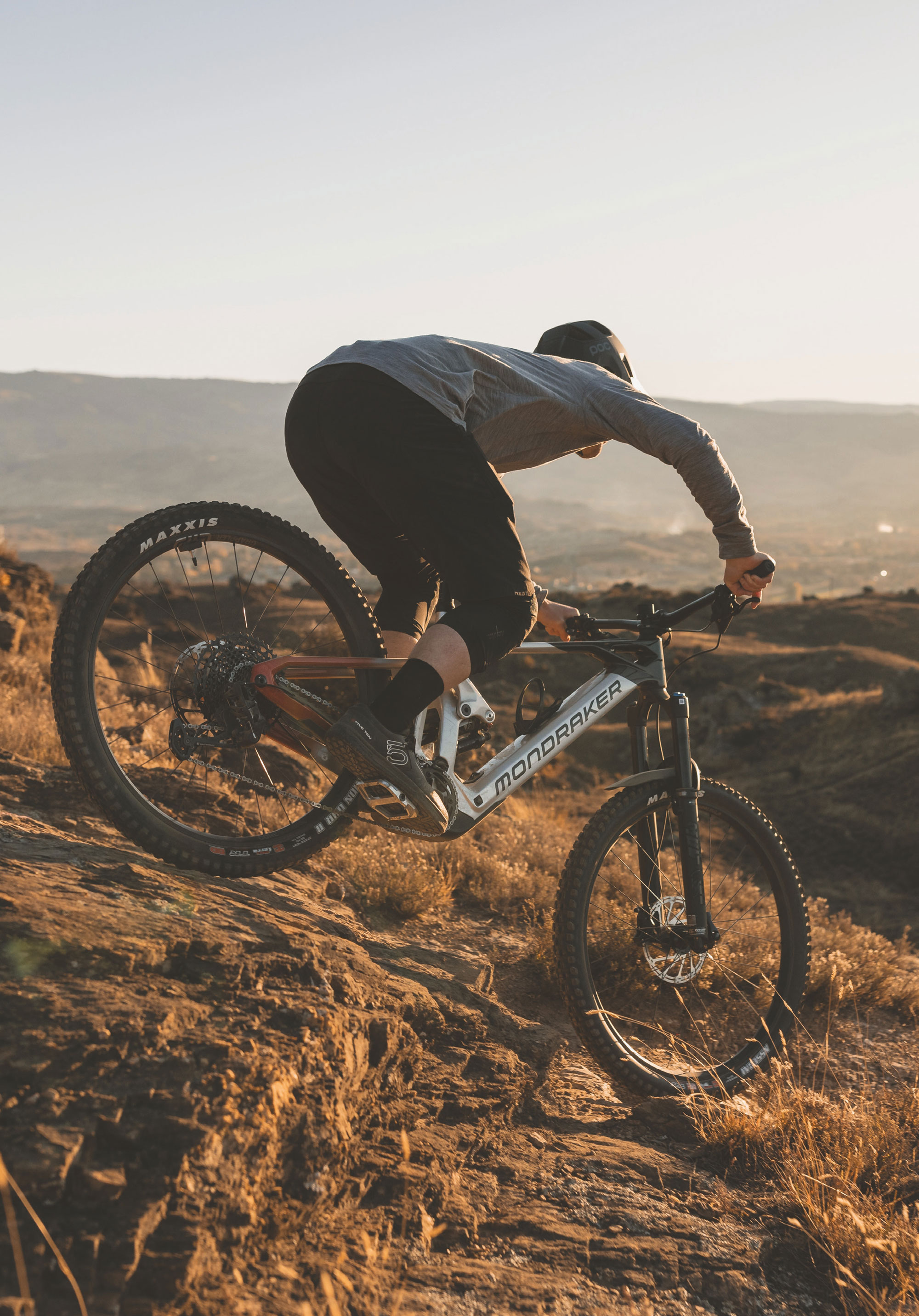
I think a lot of experienced riders still yearn for that analogue bike feel and the lower-powered modes deliver that nice balance of assistance.
On an eBike, you can sometimes feel like the front wheel is going to lift off on steep sections, especially in high power modes, but I didn’t experience any of that pull-up at the front. I felt like you could manage the torque and it was well delivered. It was smooth and consistent and didn’t come on in a big burst.
I had heard that the SX is more cadence- sensitive but even so I didn’t have to spin it up as quickly as I thought I might have to and was getting good assistance low down. It wasn’t hard to get used to it either. I just had to drop down one gear and I was set. I was still covering the ground fast and it felt really natural.
My personal preference when it comes to modes on my CX powered bike is to be in Tour mode 80% of the time, maybe eMTB mode if I’m going up a more sustained technical climb. I never really feel like I need Turbo and I hardly ever use it. I love to pedal but still want that assistance when I need it. I think a lot of experienced riders still yearn for that analogue bike feel and the lower-powered modes deliver that nice balance of assistance. Eco and Tour don’t feel super strong on a heavier bike so I thought I’d see how they felt on the SX. I switched to Tour on the steep sections and it was ideal, giving me the assistance I needed.
I had a try with eMTB and Turbo and found they were good for starting on a steep technical climb, getting you into it without feeling too strong. This is where these modes come into their own. In the spots where you’re at a low cadence and can run out of traction pretty easily, those high- power modes can help you get moving without having to worry about spinning the wheel and losing grip straight away. You get the torque that you need, where you need it. With eMTB mode you can get up and over most things and it’s the most intuitive mode for most types of riding.
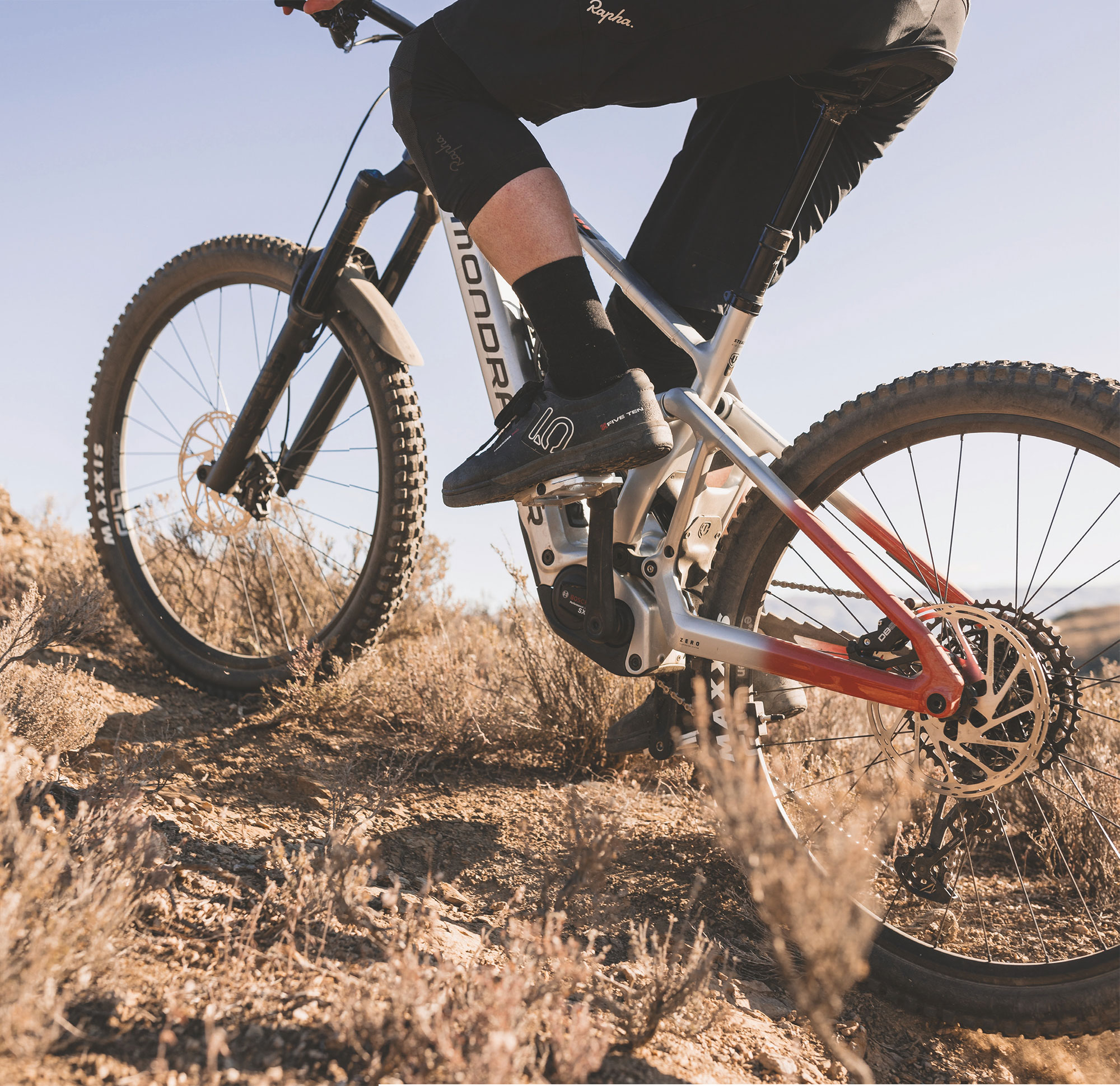
The PowerMore 250 range extender is a good size, weighing in at just 1.5kg and sits on the bottle cage mount. Even though you’re carrying the minimal extra weight, you’re not going to be suffering anymore because you’ve still got the assistance from the motor and the bike is already lighter.
In the morning, we used about 40% of the battery, then rode three hours in the afternoon on some pretty steep, techy terrain, all on one battery charge and I never felt any range anxiety. We didn’t have the Bosch PowerMore range extender with us, but it would be ideal on big days like this. Having the option of an extra 250Wh on top of the 400Wh from the Bosch CompactTube 400 that comes on the Mondraker Dune R is a huge bonus.
The PowerMore 250 range extender is a good size, weighing in at just 1.5kg and sits on the bottle cage mount. Even though you’re carrying the minimal extra weight, you’re not going to be suffering anymore because you’ve still got the assistance from the motor and the bike is already lighter. It’s much easier to add 1.5kg to your backpack than a full-size second battery and it widens the scope for more ambitious backcountry missions.
The Mondraker Dune R has a system controller installed in the top tube, so you can do a quick glance down to check how much battery you’ve got left and what mode you’re in. I liked not having a display unit to clutter the cockpit. But if you prefer having a display unit you can have this added on. Having a minimalist eBike setup with only the system controller and mini remote, but the Flow App in your pocket, means you’re getting the best of both worlds: a pure riding experience with the reassurance of powerful data in your pocket so you can quickly crunch big numbers if you need to. The Mini Remote next to the grip is great. If you’re in a tough spot where you need to change the mode easily and quickly, it behaves responsively.
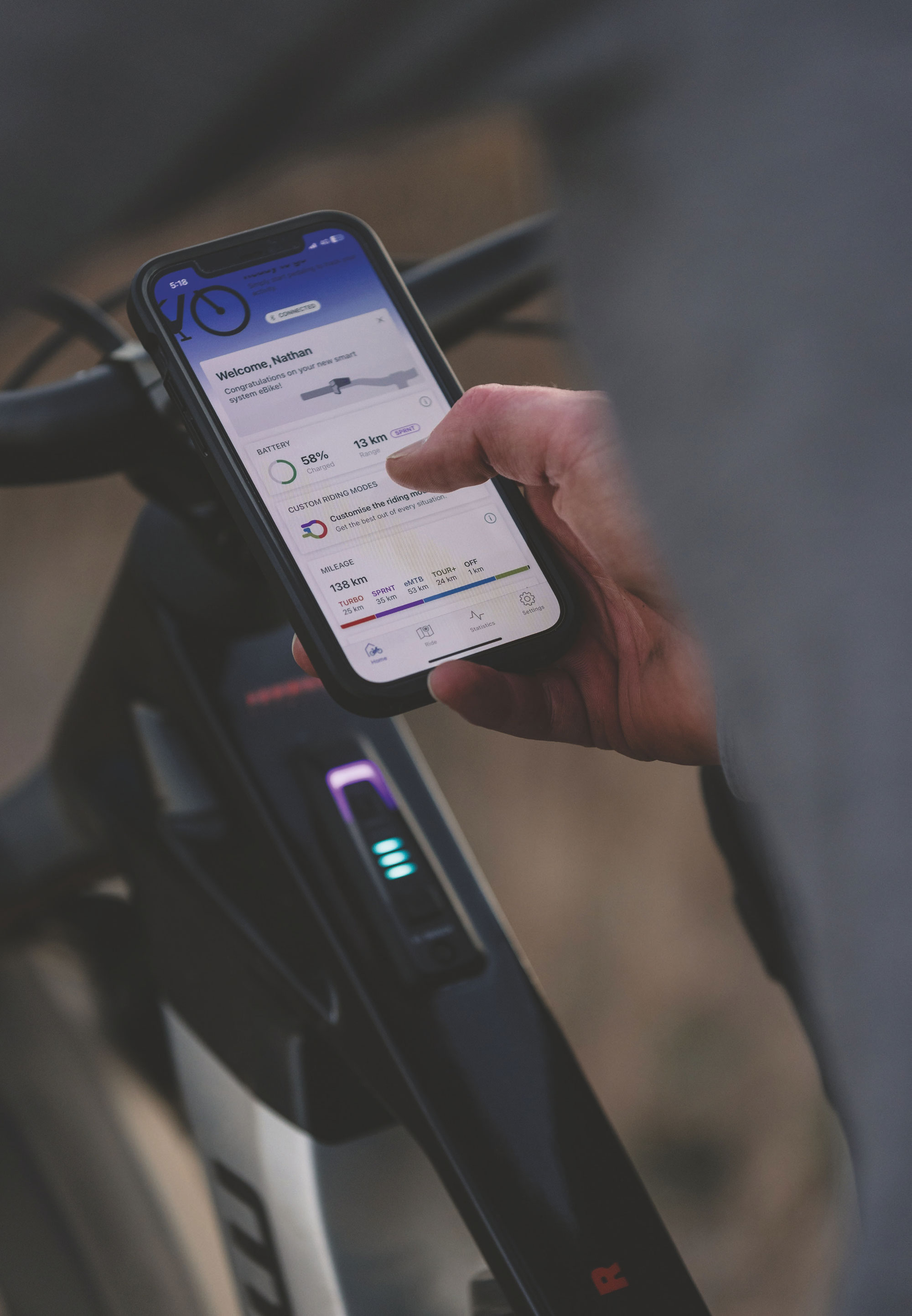
Going on a deep dive on the bike itself, The Dune R is a solid package. Mondraker has three tiers of the Dune R and this is the most affordable. Build-wise, this is in line with what you would expect at this price point. The headset was super clean with the internal cable routing; that was a nice touch and didn’t impact the steering range. Having the 180mm fork on the front means it’s quite a burly bike. I had thought it would be a bit of a handful but was pleasantly surprised on some of the tighter spots we rode; it still felt light and manoeuvrable and handling was really good. Mondraker uses their own patented dual link suspension design where the shock is compressed at both ends. This gives the bike amazing pedalling efficiency, a very progressive nature. It felt lively and responsive, firm but still plush. It was also very quiet and the build quality was immaculate. The geometry was that classic Mondraker style from their race pedigree – an aggressive approach for descents where you’re tucked in but, if you’re sitting down climbing, it puts you in a good spot. Mondraker also has a unique approach to its high-end carbon bikes. They use pure Toray Carbon with a unique layup to achieve low weight, high strength and stiffness. Most carbon frames are composites where carbon is mixed with fibreglass, so this is very solid. The bike itself really is an amazing first pairing with the Bosch SX system. I think the overall aggressive approach of the Dune makes this a compelling option.
After riding this bike, I asked myself who the bike and – specifically – the Bosch SX system could be suited to?
For advanced riders, the eBike choices are really interesting now, especially if you’re someone who’s come from an acoustic bike. This bike and system is not such a drastic jump as it would be to a full-powered eBike. It has a super-natural feel; you’re taking an analogue experience and you’re just giving it enough assistance but not in a heavy- handed way. Likewise for existing eBike riders, this presents a really different ride experience.
This system will suit someone who loves technical climbing and still wants the capability to manoeuvre, but understands that it is going to ride like a trail bike on the descents as well. It has got the right amount of torque, you can spend most of your time using the low assist modes but with the reassurance that you can bump up to eMTB when you need it and dial it back down when you don’t. Even if you’re riding with people on non-eBikes you can still chuck it in the lowest mode and ride quite naturally in a mixed group, which is sometimes difficult to do with a full-powered eBike.
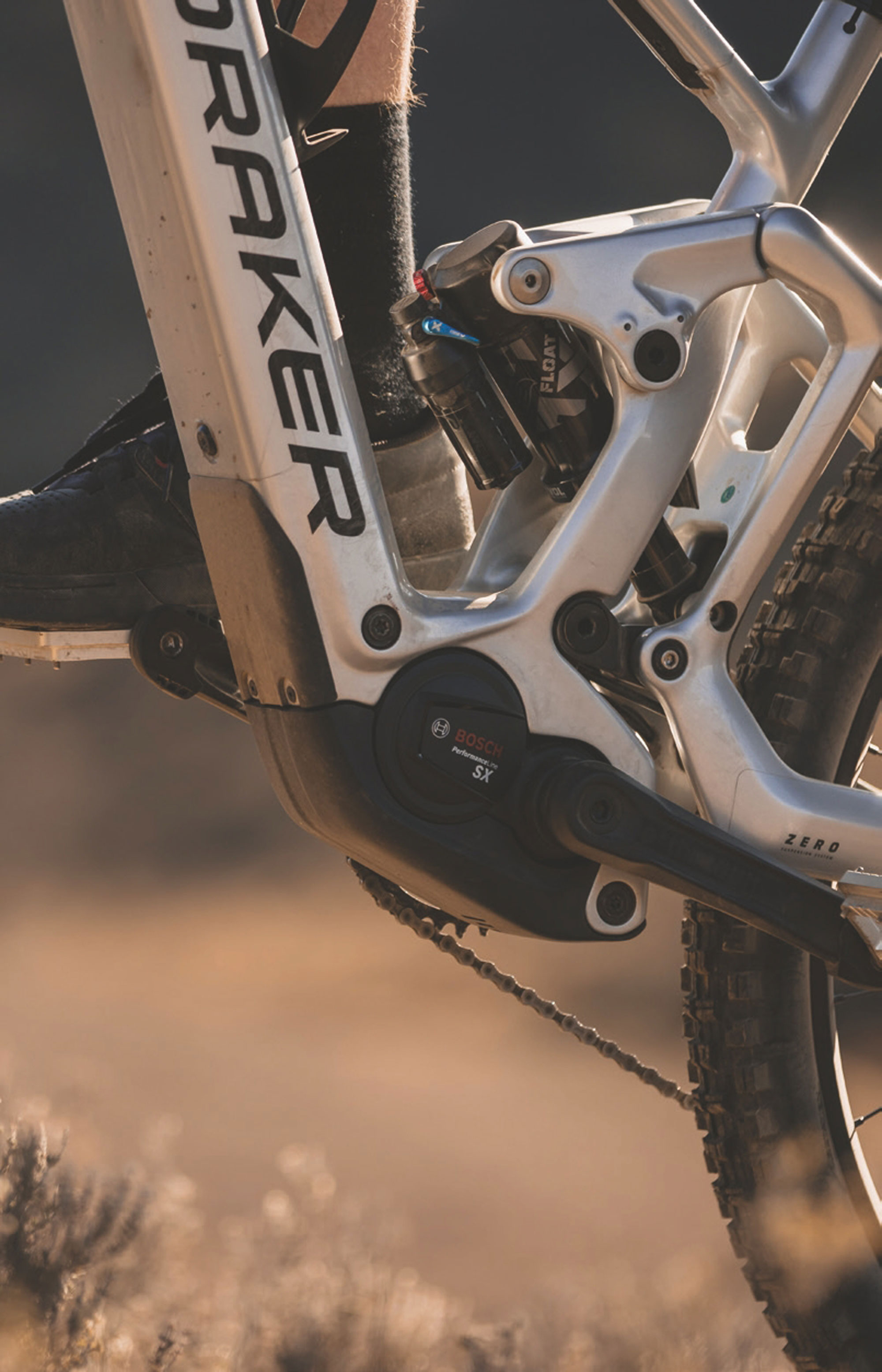
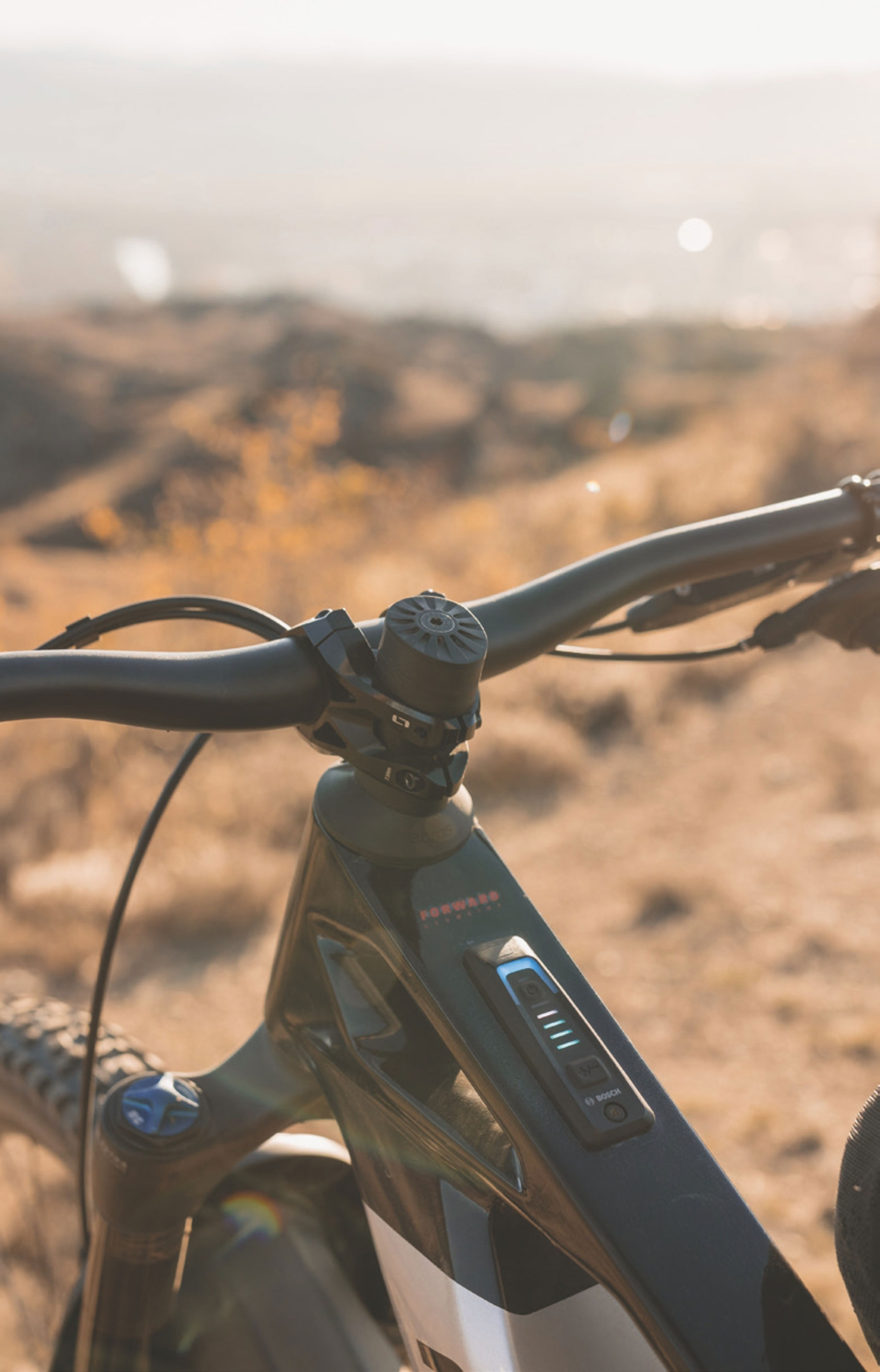
This system will suit someone who loves technical climbing and still wants the capability to manoeuvre, but understands that it is going to ride like a trail bike on the descents as well.
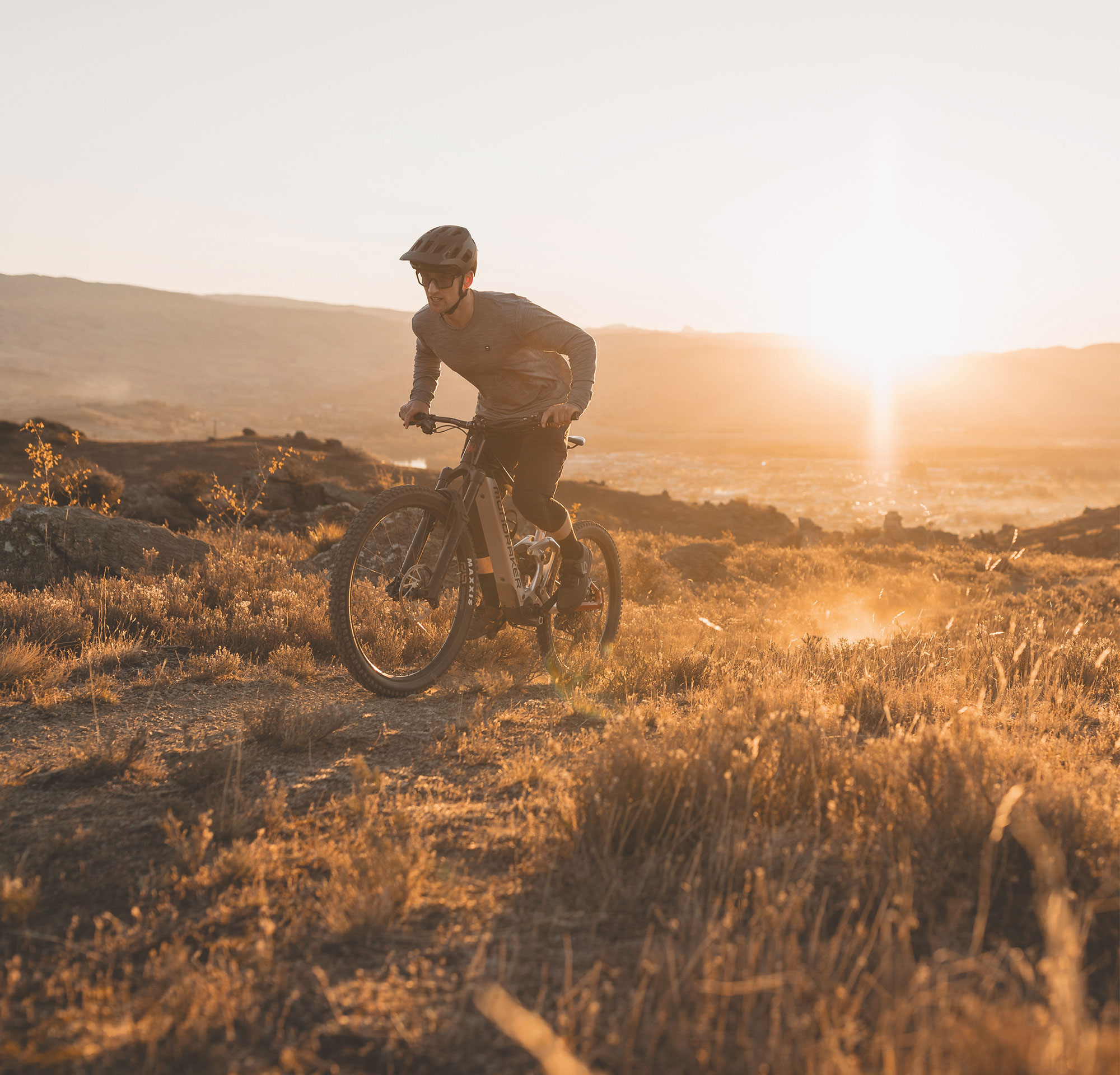
I think this could be the ultimate system for backcountry and hike-a-bike missions. The SX has plenty of torque and power, so you can climb the more unusual trails you come across on backcountry outings – and having the option of the range extender gives you that certainty of range. An eBike assists you in exploring places you otherwise wouldn’t reach, but there are always sections where you’re going to have to carry your bike over deep river crossings, where trees are down or you’re navigating a washout. Hauling a bike over that unexpected stuff can be taxing and this is where the weight is really important. Walk mode with the lighter weight system is also a breeze.
To sum up, it was an amazingly fun experience to ride this eBike and I was well and truly surprised at its capability. I was already familiar with the Bosch system so the SX felt comfortable while also bringing in some new experiences. Everything was developed to the expected high standard, from the overall system to the Flow App. I think the SX system fills a really broad part of the market and it actually strengthens where its full-powered CX offering fits. Once people ride it, it will change a lot of mindsets. The system that bridges both the eBike and the analogue worlds – you can have your cake and eat it too. This is the new natural.
Special thanks to Outside Sports, Matangi Station and Mondraker NZ (Allsports Distribution).
The Mondraker Dune R is available for purchase at outsidesports.co.nz and nationwide. For a full list of Mondraker NZ retailers visit mondraker.co.nz

Time ATAC XC6 Pedals
Words & Image Lester Perry
RRP $235
Distributor Worralls
Since 1987, Time pedals have been a regular feature in the road peloton, often found under the shoes of many a Tour de France contender, regardless of whether they were sponsored by them or not.
In 1991, Time added the ATAC MTB pedal to their range, satisfying cross-country riders’ need for float in the cleat while retaining efficient power transfer. Time pedals have taken multiple riders to World and Olympic glory in cross-country races, but seem to have always flown somewhat under the radar in wider MTB circles – although they’ve maintained an underground, hardcore following of those who like the feel and self-cleaning of the system.
In February 2021, SRAM acquired Time Pedals, bringing it into its extensive family of brands, boosting its profile and putting it back on people’s radars.
The few times I’ve stepped away from my tried-and-true Shimano pedals, I’ve jumped right back on them in just a few rides. I’m either too impatient and didn’t give myself time to adapt to the feel of something new, or the product wasn’t up to par. Until the box turned up with the Time XC6 pedals inside. I’d never even considered trying Time pedals, such was my fear of changing from the familiar.
Featuring a hollow steel axle for lightness and durability, a composite body, and tension adjustment, the features of the XC6 are familiar. The ATAC retention system offers easy engagement, and its open design helps clear debris each time you step in, the cleat forcing debris out through the retention device.
There are two heel release angles available, depending on which shoe you mounted which cleat on. One configuration gives a 13-degree release angle and swapping the cleats left for right gives a 17-degree release angle. Whichever way you choose to set up the cleats, there’s a 5-degree angular float. Uniquely, and fitting with Time’s aim to offer more ergonomic pedals than their competition, there’s also a +/-2.5mm of lateral float helping a rider’s legs move in more natural planes.
Clipping in is more or less the same as what I’m used to, a positive feel, and an audible click as the cleat snaps into place. Compared to what I’m used to, there’s a more progressive feel as you unclip, a slow build of tension before it pops free, rather than the firmer ‘snap’, almost instant, feeling I’m used to.
With cleats set at 17 degrees, I found them odd – far more ‘twist’ of the foot was needed than I liked, leaving me unsure I’d get along with the system, as I couldn’t get my foot out as fast as I needed for an emergency foot dab! I imagine some riders would like the feel of being able to move their feet around this much without fear of them unclipping, but it’s certainly more than I’d like.
After my experience at 17 degrees, I not so enthusiastically swapped the cleats around to the 13-degree release set up. What a game-changer that was; a more familiar feeling, although still different from my norm, and a completely different experience from the 17-degree. Only after the swap was I really beginning to click with these pedals! (See what I did there?) There are only three clicks of tension adjustment on offer and I really thought Time had missed a beat here, but after some experimenting, I tensioned them up to max and left them. The retention is so solid that I haven’t felt I needed them any tighter.
Using the XC6 pedals exclusively on my Shimano XC-901 cross-country shoes, they feel nice and solid; there’s no fouling with the sole or anything unexpected while clipping in or out. They feel noticeably more locked-in than other systems I’ve used and feel extremely positive under power. There’s almost no torsional movement or rocking of the shoe once clipped in, and no ‘up and down’ play between pedal and cleat either, just a very secure feeling all around.
After spending a few months on the pedals I’ve been impressed, they’ve done their job without skipping a beat and I’m now surprised Time pedals don’t feature more on people’s bikes, particularly in one of the more popular ‘trail’ styles that Time offer.
Clipping in is more or less the same as what I’m used to, a positive feel, and an audible click as the cleat snaps into place. Compared to what I’m used to, there’s a more progressive feel as you unclip, a slow build of tension before it pops free, rather than the firmer ‘snap’, almost instant, feeling I’m used to.
While out of the saddle pedalling up steep inclines, I’ve occasionally felt my shoe moving forward and backwards a fraction. I’m putting this down to the bars of the retention device moving a smidgen, they’re basically two springs so I figure they’ll move slightly in some scenarios. Not a biggie and by no means a deal breaker, but it was a bit unnerving at first although it’s only in extreme uphill scenarios when it is noticeable.
Thus far the only wear on the pedal body is cosmetic, and the cleats have lasted well, although being brass I wonder if they’ll wear quicker over winter in some slop. My only real concern is noticeable groves wearing in front of, and behind the cleat on my shoes, the mechanism has worn into the carbon sole slightly. This isn’t a worry yet, although I’ll be interested to see it in another six months. I do wonder if they “bed in” and then stop wearing any further. I know other pedal brands offer “shoe shields” but Time doesn’t appear to; these would remedy this I’m sure.
After spending a few months on the pedals I’ve been impressed, they’ve done their job without skipping a beat and I’m now surprised Time pedals don’t feature more on people’s bikes, particularly in one of the more popular ‘trail’ styles that Time offer.
If you’ve had knee or hip issues in the past, want pedals that clear muck exceptionally, or simply want something a little different from your mates, then don’t look past the Time pedals!
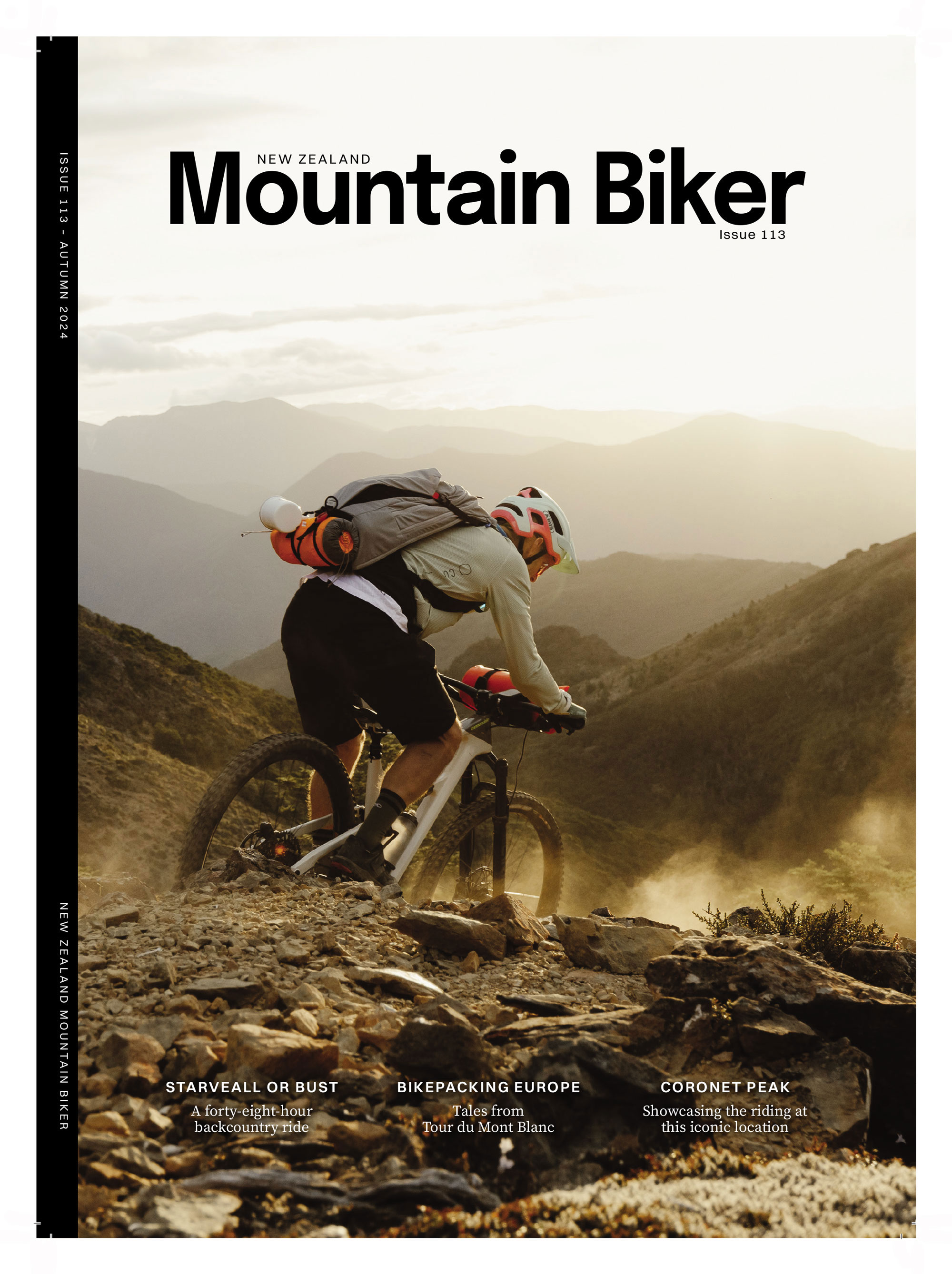
CamelBak M.U.L.E 5 Waist Pack
Words Lester Perry
Image Cameron Mackenzie
RRP $179
Distributor Southern Approach
Let’s face it: most people avoid riding with a backpack at all costs, particularly on hot summer days. Out on the trails, we see all sorts of things strapped to bikes, but if you’re hoping to go further afield and into the outback then you need more than that tube, a CO2 canister and a tyre lever strapped to your top tube, let alone the need for extra hydration.
The CamelBak M.U.L.E is a worthy attempt to solve the problem of not wanting to wear a pack, whilst carrying almost as much gear as a small pack, along with some extra hydration. The hip-pack weighs in at 320 grams and offers a 3.5-litre capacity. It’s sewn from a hardwearing, lightweight 200D Nylon Ripstop material. An Air Support back panel helps with airflow between the pack and the body, using an open mesh and foam combo to help air move between the two.
The M.U.L.E has lots of storage options; the main compartment has a pocket for the bladder and some internal pockets to help keep small items in place and right where you put them; and there’s also a smaller outer pocket. On either side of the main compartment are bottle holders, designed for a regular-sized CamelBak Podium bottle but ideal for whatever you want to stuff in them. The waist strap helps support the load on the hips and adds stretchy pockets with envelope closures on either side of the main compartments, ideal for small items you want easy access to without needing to rotate the pack forward. Compression straps can be cinched up to hold the contents in place and help keep the weight close to the body. Along the bottom of the pack are some elastic loops, offering additional external storage, ideal for a jacket, large salami, or half-eaten baguette.
The M.U.L.E comes supplied with a Crux 1.5L hydration bladder, offering effortless access for your sipping pleasure thanks to its nifty QuickLink magnetic holster and high-flow bit valve. If you wanted, you could forego the bladder and add bottles to the side pockets for a more versatile and adaptable setup.
Having a waist pack on some of our hottest days, rather than a full pack, has been great - it’s so much cooler to wear.
As you can see, there’s quite a lot going on with the M.U.L.E. I’ve found it a versatile piece of kit, using it on some lengthy rides, sans bladder, mainly as a place to stow some tools, food, and a jacket, while keeping bottles on my bike. I’ve generally left it loaded up after each ride so I can just clip it on when I’m heading out for a dawn raid, knowing I’ve got everything I need for every eventuality, within arm’s reach. Having a waist pack on some of our hottest days, rather than a full pack, has been great – it’s so much cooler to wear. Without a full bladder in there, the capacity is quite large and I can’t imagine anyone would need anything bigger than this to carry a day-trip worth of gear.
On adventures where I’ve added the 1.5-litre bladder into the mix, I’ve found the pack quite heavy, probably a good couple of kilos hanging off my hips. When I was breathing heavily while seated (think a steep hour-long climb) the waist belt got in the way of breathing freely – not ideal. Trying to remedy this, I’ve taken to fitting the strap as low on my hips as possible; this helps to a point, but doesn’t solve the problem. I have found it’s better suited to riding a more relaxed, upright position (i.e. on an Enduro bike) and when I’m not puffing hard it’s certainly not as noticeable.
Does it work well? Yes. Is it comfortable and unobtrusive to use? Sort of. It’s comfortable to wear and I’ve appreciated being able to have a bunch of kit on hand, but when the bladder is full, all that weight hanging off my hips and interfering with breathing kills the advantages of using it for me. I’ll keep using it to carry gear and food when required, but only use a full bladder when there’s really no other option.

Shimano GE700 Shoes
Words Lester Perry
Image Henry Jaine
RRP $249
Distributor Shimano NZ
If the shoe fits, wear it.
The GE7 is part of the latest range of redefined Shimano shoes. Much like the flat pedal- focussed GF6 we reviewed in our previous issue, the GE7 has received a new silhouette and last, as well as incorporated a host of Shimano’s latest tech and buzzword features.
Striking a healthy balance of inspiration from skate, MTB, and outdoor shoes, I’d say there are equal parts of each included in the design; the GE7’s styling doesn’t delve too far into any one category. Internationally. I see there’s a light grey colourway available with some nice earthy-toned accents – certainly in line with current fashion trends, but unfortunately this appears to be unavailable in NZ. If you like black then these will be right up your alley. And, fortunately, black goes with everything! Want some colour in your life? You can step up a level to the GE9 – essentially the same shoe but with a BOA tensioner.
I’m roughly three months – and a tonne of varied rides – into my time with the GE, and I’m stoked about these kicks. The synthetic leather upper is showing few signs of wear, although just like a glossy black Audi, it’s tough to keep them looking clean. Sturdy laces keep the shoe secure on foot and, rest assured, there’s nothing mechanical to worry about breaking when you’re in the back blocks of nowhere. The chunky Velcro strap at the top of the shoe can be cranked down as tight as you’d like, providing a super secure heel hold if that’s what you’re after. Laces can be tucked tidily under the strap for snag-free riding or hiking.
If you’ve ever kicked your toes into a rock while foot out drifting through a turn, or clipped a root while rodeoing through a section of trail, you’ll appreciate the robust cap over the front of the toe box.
I’m roughly three months - and a tonne of varied rides - into my time with the GE, and I’m stoked about these kicks.
There’s a substantial amount of fore and aft adjustment in the cleat bed, so regardless of your beliefs on cleat positioning, you should find your nirvana with these shoes. While clipping in, there’s no interference from the sole with the pedal and, in classic Shimano fashion, the cleat glides right on into, and out of, the pedal unhampered. Honestly, I’ve had a hard time with shoes over the years, and I’m always nervous to try anything new.
I’m after a reasonably stiff sole for pedalling but want a shoe that’s equally as walkable; the holy grail, Goldilock’s porridge sort of vibes. I’ve had gravity-focused shoes from Shimano that were plenty comfy, but too flexible while pedalling for my liking. Utilising Shimano’s Torbal 2.0 midsole, the GE7 offers what I reckon is edging on the perfect level of stiffness for trail and gravity endeavours, ticking all the boxes for me. I’ve been impressed by how solid they feel on the pedals, there’s minimal flex under power – there is some but it takes some watts to really feel it, and there’s enough flex that they feel quite natural through the transition from heel to forefoot while walking.
The Volume Trail Last gives a snug fit through the midsection up to the ball of the foot, then widens significantly towards the toes. This shape is ideal for us jandle-wearing Kiwis or anyone with a wide foot. The roomy heel cup doesn’t strangle your Achilles but is secure enough for minimal heel movement while on the gas, and even while walking the heel remains pretty well locked in place.
The midsole has an EVA foam section running the length of it, providing a comfy level of cush for walking – plus it noticeably dampens vibrations while clipped in. Shimano have nailed the rubber outsole by utilising their new ULTREAD GE rubber. While unclipped, there’s a stable platform and traction to stop you from getting too sketchy on the pedals in those situations when you just can’t get clipped in. Scrambling up steep inclines is sure-footed thanks to deep knobs under the toes. These, combined with compliance at the toes, give the shoe an almost hiking boot feel while tackling hike-a-bike sections – impressive for sure.
These are hands-down the best all-round MTB shoes I’ve used. I’ve struggled to find any fault or weak point and I think you’d be hard-pressed to find a better pair for general trail use. I don’t make that statement lightly: they really are that good.

Cannondale Habit LT1
Words Lester Perry
Images Henry Jaine
RRP $8699
Distributor Worralls
A summertime fling.
I was sitting at the top of St Arnaud’s ‘What’s Up Doc’ climb; my watch showed 7:30am. It took me an hour and a bit to get here from where I’d camped, and the sun had just peeped over the ranges beside me. Alone aside from the bike, I pondered how many days we still had together, knowing our time together was soon to end.
It wasn’t love at first sight, and although she had some flaws, I’d learned to live with them. Eventually, when the curtains closed on our time together it was tough; this diamond in the rough had left a mark and I didn’t want to part with it.
I was stoked when Cannondale hired a host of creative and stylish riders to form the Waves team, including the unmistakable ’Rat Boy’ Josh Bryceland, to rep their Habit platform. At the time, a short travel trail bike leaning towards a playful style of trail riding. I wasn’t sold on its relatively short travel though; its 130mm in the rear and 140mm front travel left me wanting more. It was just too limiting for my preferred riding spots.
Step forward a few years and in comes the Cannondale Habit LT 1, a longer-legged version of the Habit. The new LT (Long Travel) platform followed on from the Habit, taking its rugged good looks, balanced geometry and all-around fun factor, but in a slightly more forgiving 140mm/150mm package – right up my alley. The LT’s longer travel broadened the type of riding it’s suited to, pushing it toward the rowdier end of the spectrum but without the excess weight and sloth of a full gas enduro bike.
Having spent the bulk of my recent summer months aboard the Habit LT 1, both on my local trails and across a full buffet of South Island holiday road trip adventures, I’ve put this rig well and truly to the test, discovered what I liked and disliked, and ultimately got a good appreciation for what it’s all about.
Before I even set eyes on the bike, I needed to let Cannondale NZ know what size I’d need. According to the Cannondale size chart, at 176cm tall I sit right at the top of the Medium, or bottom of the Large size. What to do? Comparing the geometry of the Medium to that of my own ride I decided it was too short, and the Large was probably larger than ideal, sort of a Goldilocks’ porridge situation. I came to the decision that I’d likely feel cramped on the Medium but could get accustomed to the Large and its 475mm reach. A few weeks later the rig arrived fully built and ready to roll. The Large did feel ‘large’, but not too big; game on!
Clean lines and oversized junctions set the scene for the Habit LT1’s frame. Visually, there’s nothing too out of the box or polarising, although the headtube junction and bottom bracket cluster are pretty substantial. I wouldn’t go so far as to say they’re overbuilt, but those junctions are a noticeable feature of the front end. A full carbon construction, everything other than the suspension linkage is sweet, sweet, carbon fibre, including the chain and seat stays. With no seat stay bridge to be seen, the seat stays are separate, tied together only by the yolk that drives the shock, and the rear wheel axle.
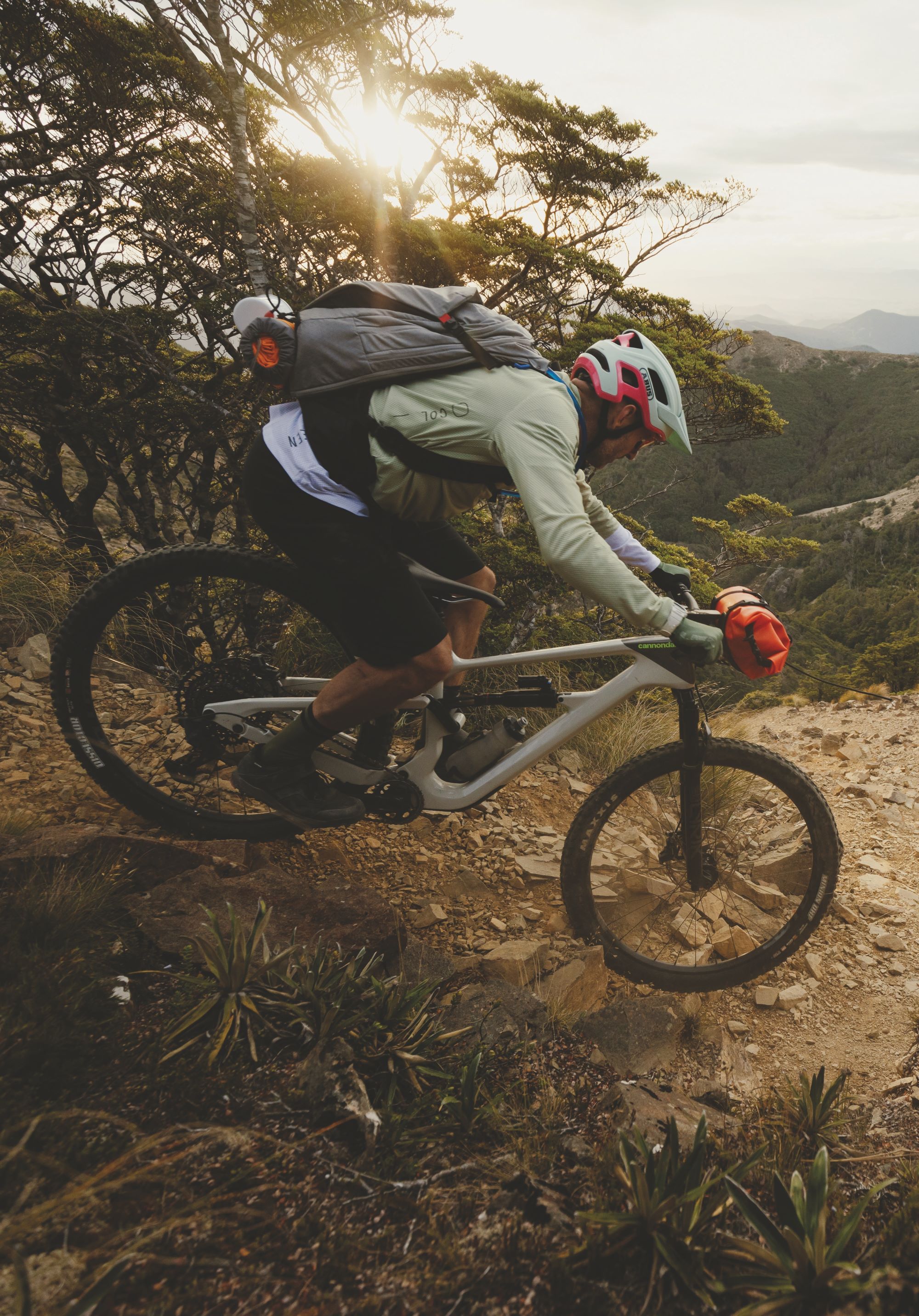
With its comfortable geometry, it’s a bike that you can easily manoeuvre around, or jump over whatever’s in front of you - think a paring knife as opposed to a meat cleaver; they both get a similar result but get there in distinctly different ways.
Cannondale has a somewhat chequered past in some respects, due to regularly adding proprietary technology or features on their bikes, which has ultimately put some riders off making the step onto the brand. It’s great to see nothing too out of the ordinary on the Habit LT line, just industry-standard sort of stuff. A threaded bottom bracket, 148 boost spaced rear end, and regular tub-in-tube internal routing for cables, no niggly headset routing or strange rear wheel offsets on this bike!
Five frame sizes are available, all with 29” wheels, aside from the XS with 27.5” wheels. It’s great to see some size-specific chain stay lengths across the sizes. Small and Medium share the same chain stay length, all other sizes are unique in length. Different length rear ends also mean size-specific rear shock and suspension kinematic tunes, keeping the bike optimised for the rider, however tall they maybe.
The head-angle sits at a conservative but precise 64.7° and the seat tube is an acceptably steep 77.1°(effective). Geometry that’s neither here nor there, but current, and nails the use case for the bike. The main frame has a single bottle cage mount on the downtube, and an accessory mount under the top tube. In the large frame I tested there was heaps of room for a full-size bottle in the front triangle – that’s a win in my book.
Cannondale designers have done a nice job of helping to keep the frame looking fresh long-term, and quiet to ride with well-thought-out rubber protection on the downtube, chain stay and seat stay. Strategically placed top tape keeps other key areas on the frame scuff-free. The addition of a rubber mudguard behind the bottom bracket, over the main pivot, keeps the area contaminant-free and helps with bearing longevity.
Spec-wise, we’re looking at some familiar, tried-and-true hardware on the Habit. A complete SRAM GX Groupset, there’s only one cable and it’s not an electronic one, a complete manual setup here. If you want to upgrade to the latest T-type transmission, there’s a UDH hanger on the frame to allow for that. The GX groupset in this most recent iteration has been around a few years now and it’s a workhorse on a lot of bikes of this level. No complaints here, it just needs the occasional tweak of cable tension, and a clean chain to maintain hassle-free performance.
SRAM’s Code R brakes, with a 203mm rotor up front and a 180mm out back, offer just enough power for this rig. I don’t think I’d manage with anything less on this bike. There’s plenty of adjustment on offer, so even the pickiest of fingers can find the perfect lever position. They’ve got a decent, solid feel at the lever and only on the longest descents I found a little fade in the rear, no doubt exacerbated by my rear-biased braking and that 180mm rotor, a 203 rotor on the back would be ideal.
The bike has a stable, planted feel on the trail, but still feels that there’s enough support to keep it playful and responsive rather than subdued and dull, allowing you to boost from trail features and not feel like you’re blowing through all the travel on landing.
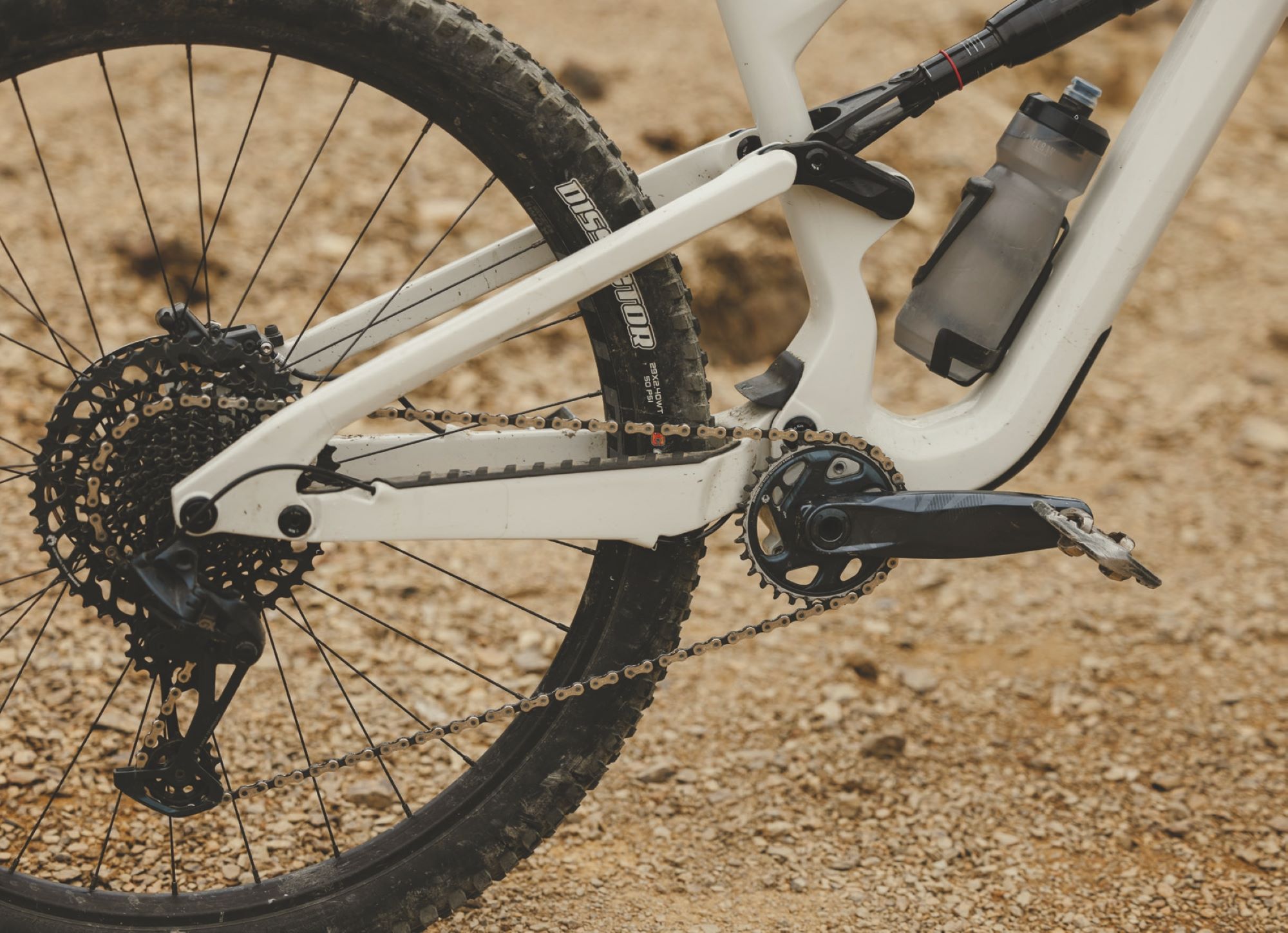
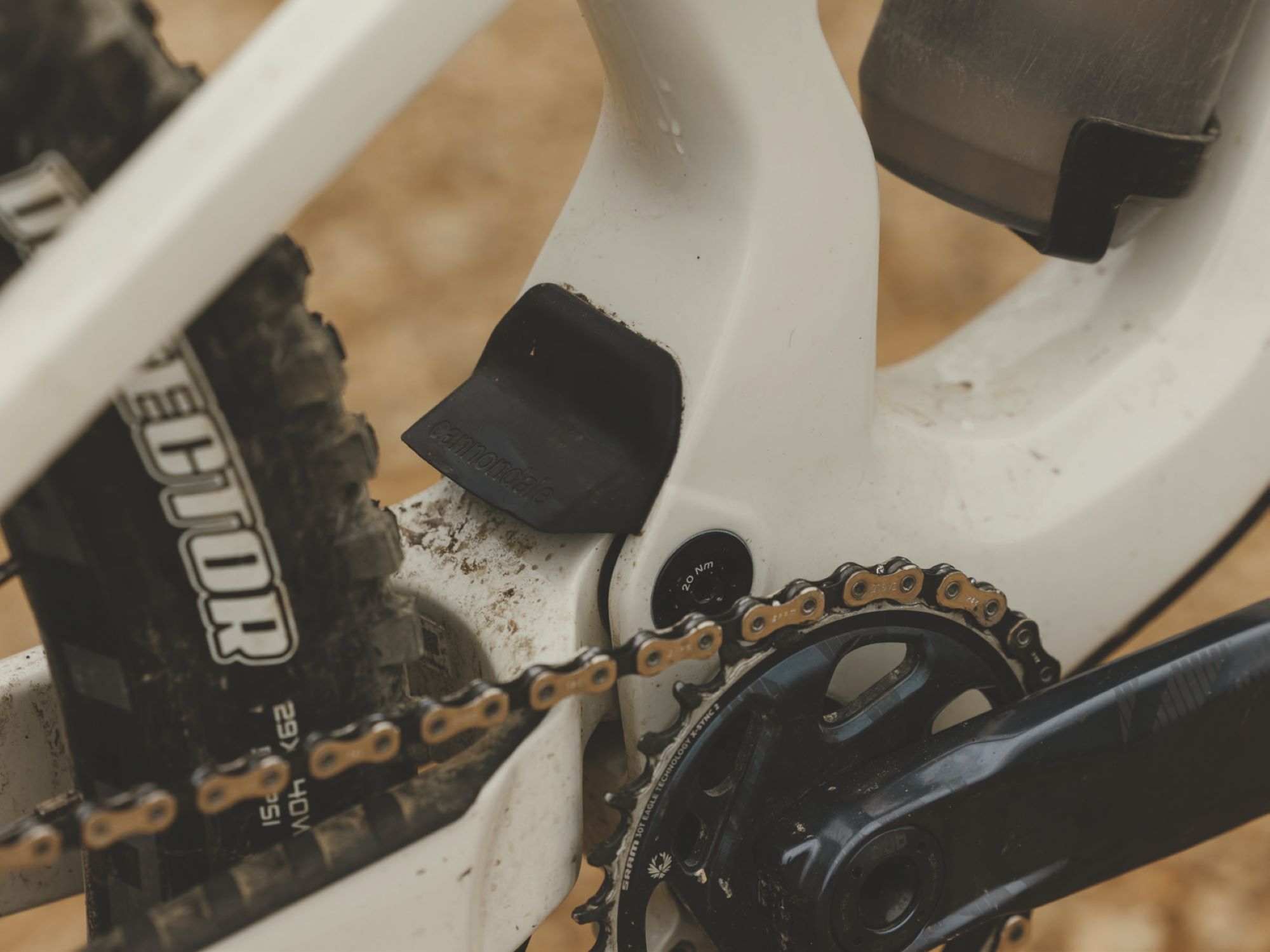
The cockpit and dropper post are taken care of by Cannondale in-house labels, while the grips and saddle are Fabric branded items. The dropper is 170mm and is nice and smooth – not a shotgun fast return but not so slow as to be an issue. The post doesn’t have the lowest stack height, but the length worked ok for me, although with a lower stack post, I’d comfortably go up to around a 190mm drop. Considering I’m right at the bottom of the height recommendation for the Large, I’d imagine the 170mm post won’t be ideal for those more towards the centre or top of the height chart. The seat tube on the Habit LT isn’t the shortest at 445mm, limiting the maximum drop possible on the bike. The dropper lever does its thing with no qualms, and is nice and smooth with a light action.
The HollowGram carbon bar is huge for a trail bike with a 30mm rise, and a full 780mm width – that’s a lot of height for a trail bike, especially one with such a large stack. Riders on the taller end of the spectrum will appreciate this much height, but as you’ll see further on, it was a slight niggle for me. The stem is also a Cannondale in-house number and comes in a nice new-school 40mm length.
The WTB KOM i30 TCS 32-hole wheels on proven DT Swiss 350 hubs have been trouble-free as expected. Not once have I had to pull out the spoke key to remedy a wobble after a cased gap or smashed root. There’s no need to discuss the hubs as it’s fair to say these beauties would see a tonne more riding before I’d even need to look at any bearings. A clean and lube of the freehub may have been necessary, had I been riding in the wet regularly – but over the review period, I touched the mud just a few times.
Shod with a pair of Maxxis tyres, there are no surprises here, or sidesteps needed from the stock spec: a Minion DHF 29×2.5” takes care of tracking up front, while highspeed rolling, but is sketchy in some conditions, with Dissector 29×2.5” features on the rear. It’s good to see Cannondale have the foresight to spec the EXO+ casing version of the tyres, no need for immediate off-the-floor upgrades if you’re an aggressive rider or live in a rocky area where you’ll appreciate the sturdier EXO+ casing over the often specced EXO. The Dissector is an acceptable summer option as a rear tyre, and great in conditions where it can cut in for some traction, but in loose or muddy surfaces it struggles for braking traction (the central knobs are quite low). The side knobs appear to lack support and fold over on the hardpack; great for squaring off berms or flicking a Scandi’ into a turn, but not so much for overall control – wear it out and replace it with a Minion DHR2, problem solved… although a little slower rolling.
Hanging off the front of the chassis is the supple and controlled (thanks to the new Charger 3 TC damper) ROCK SHOX Lyric Select + fork. I’ve been impressed by how good the fork is in all circumstances; high-speed chatter, no matter; big- hitting bangers, no biggie. A bit of experimenting with the high and low-speed compressions left me with the high-speed wide open and two clicks from fully open on the low speed; this seemed a decent setup for most conditions of trails I ride.
The rear end is damped with a ROCK SHOX Super Deluxe Select +. A visit to the ROCKSHOX TrailHead website for some baseline setup advice left me at a few hairs under 30% sag. I subtracted a couple of clicks from recommended on the rebound, speeding the back end up to just how I like it.
For sure I prefer the Habit LT’s active, supple suspension over a higher-anti squat and consequently more ‘locked out’ pedalling experience, particularly at this mid-travel level.
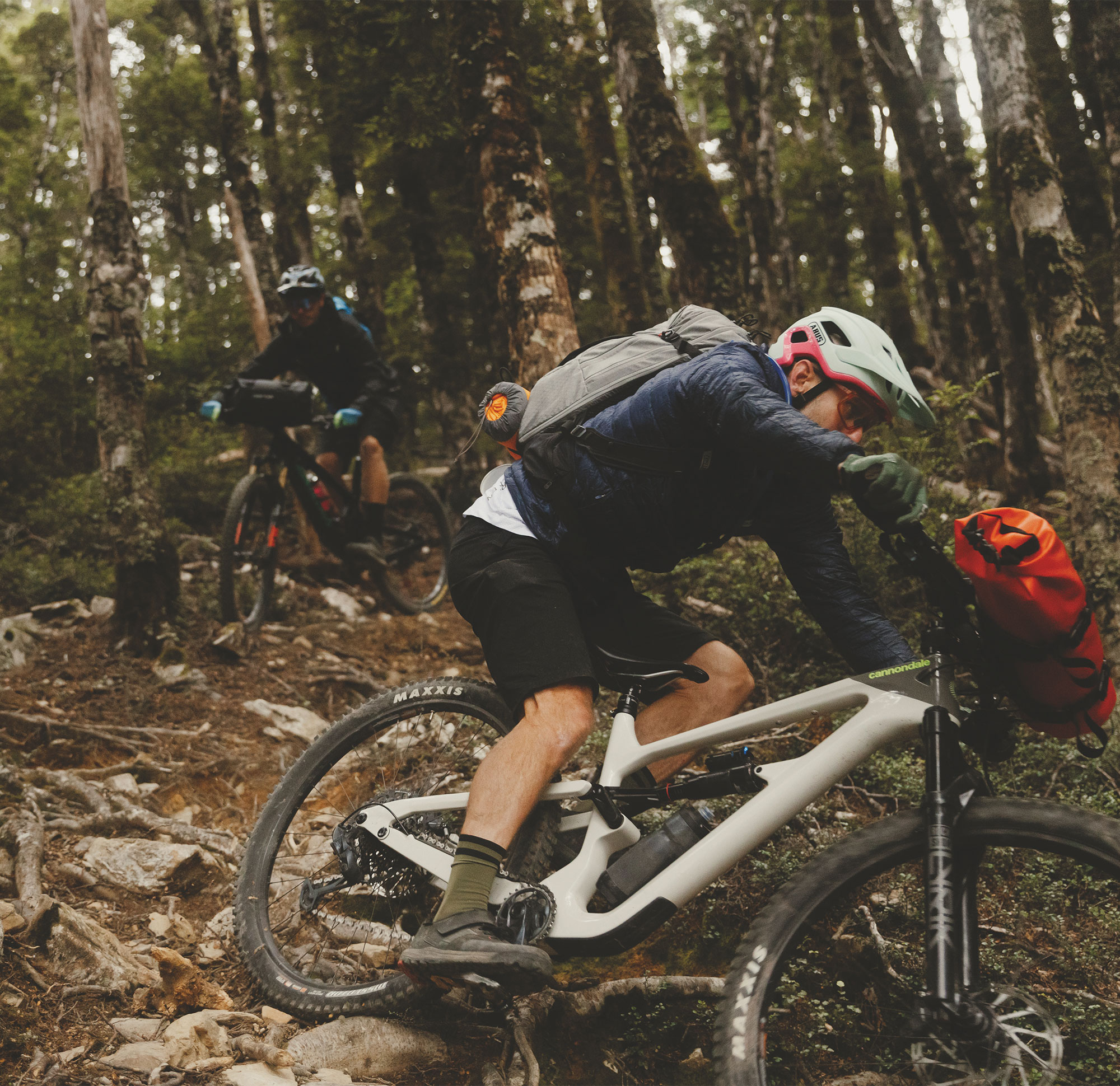
Once the suspension was dialled in, I took the bike for a quick ride and my first impression was that this bike is built for fun: poppy and playful. My second impression is how high the front end is. The large 644mm stack combined with the 30mm rise of the 800mm wide HollowGram SAVE handlebar made it super easy to chuck a sweet wheelie, or manual through a section, but on everything other than steep descents left me feeling disconnected from the front tyre. After some time with my trusty tape-measure, I landed on a 760mm wide, 15mm rise bar and a single 10mm spacer under the stem. Lowering the front made me feel more centred on the bike, with more weight over the front but still keeping the front end high enough for some aggressive riding. Once I got the front end to an acceptable level (for me), it unlocked the cornering of the bike and I felt comfy and at home. Swapping handlebars from new may be needed by some riders, but as bar height and width are certainly a personal preference it likely won’t be necessary for everyone, particularly if you’re on the taller side.
The rear suspension kinematic is linear through most of the travel, feeling consistent through most of the shock stroke and finishing with a steep ramp-up at the end of the travel, preventing harsh bottom-outs. The bike has a stable, planted feel on the trail, but still feels that there’s enough support to keep it playful and responsive rather than subdued and dull, allowing you to boost from trail features and not feel like you’re blowing through all the travel on landing.
Descending on the Habit LT is just plain fun. This isn’t a huge travel rig you can plough un- controlled into chunky rough sections, relying on huge travel and slack geometry to keep you out of trouble. With its comfortable geometry, it’s a bike that you can easily manoeuvre around, or jump over whatever’s in front of you though – think a paring knife as opposed to a meat cleaver; they both get a similar result but get there in distinctly different ways. Central rider weight keeps the bike planted, aiding traction and helping keep you very much under control. Multiple times I exited a trail surprised at how the bike handled some of the rowdier sections, particularly as it hasn’t got the longest travel, or most progressive geometry. On steep trails, with lots of large successive hits, the suspension stiffens up somewhat under the braking forces, causing the back end to feel quite harsh. Not a deal breaker, but more noticeable than some other bikes in this travel range and we’re not really riding that type of terrain often.
Low anti-squat means the rear suspension is still plenty active under pedalling, ideal for a bike aimed at descending fun, rather than pedalling prowess. Of course, this means it’s obviously very active on steep climbs, sagging into its travel and creating bob. I found this quite noticeable and was surprised by just how much it could sink into its travel on really steep uphill pitches. Fear not though; the lockout lever is within easy reach and very effective. I found most of the time I’d throw the lockout on for any extended, consistent climb but leave it open for anything resembling a technical climb as the extra traction it allowed was welcome. For sure I prefer the Habit LT’s active, supple suspension over a higher-anti squat and consequently more ‘locked out’ pedalling experience, particularly at this mid-travel level.
The bike tracks well across off-camber and through flat turns, partly due to the geometry putting rider weight centrally between the wheels, partly due to the supple suspension kinematic, but also because of the back end having a healthy amount of torsional compliance, aka flex. In recent years, designers have been moving away from the aim of having the stiffest bike, aiming for a perfectly tuned flex through the frame. If done effectively, a back end with more flex can also mean better tracking, assisting with overall rider confidence, and feel; I reckon the Habit LT nails this, whether that was the design team’s intention or not. This compliance means the Habit LT isn’t the spriteliest bike while sprinting, but it isn’t a cross-country bike either, so pedalling is secondary to overall roost-ability and fun.
Mellow trails (i.e. most of what we ride) are a blast on this bike; it picks up speed quickly, and jumping into sniper landings or pumping through sections gives a noticeable speed increase.
Cannondale reckons the ‘LT’ moniker stands for Long Travel, but I wonder if it really stands for, as the youth of today say: “Lit Time” (i.e. a “great time” to those of us who are slightly less youthful). Out of the box, as you’ve seen, there were a few things I wasn’t a fan of and, although they’re all personal preferences, they meant I needed to spend precious time getting to my optimal setup, this isn’t exactly a ‘get on and go’ bike. That said, once I got my setup dialled, this bike was awesome. It’s really changed my perspective on what bike I need as my ‘everyday ride’ and, with modern suspension, geometry and frame design, a shorter-travel bike like this can now be on par (or better) than a longer- legged bike from only a few years ago and make for an overall better experience, regardless of the few scenarios it’s not in its element.



